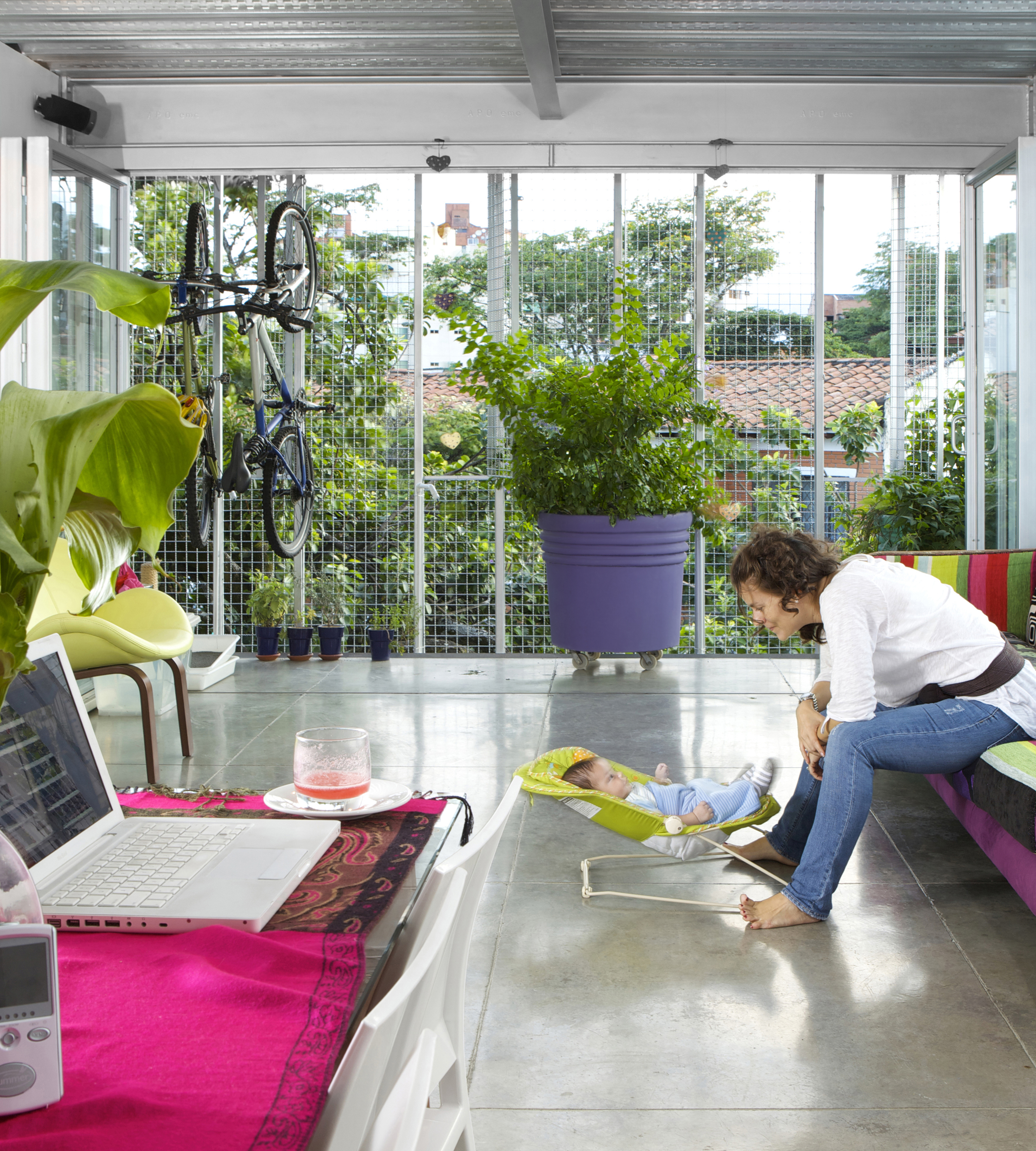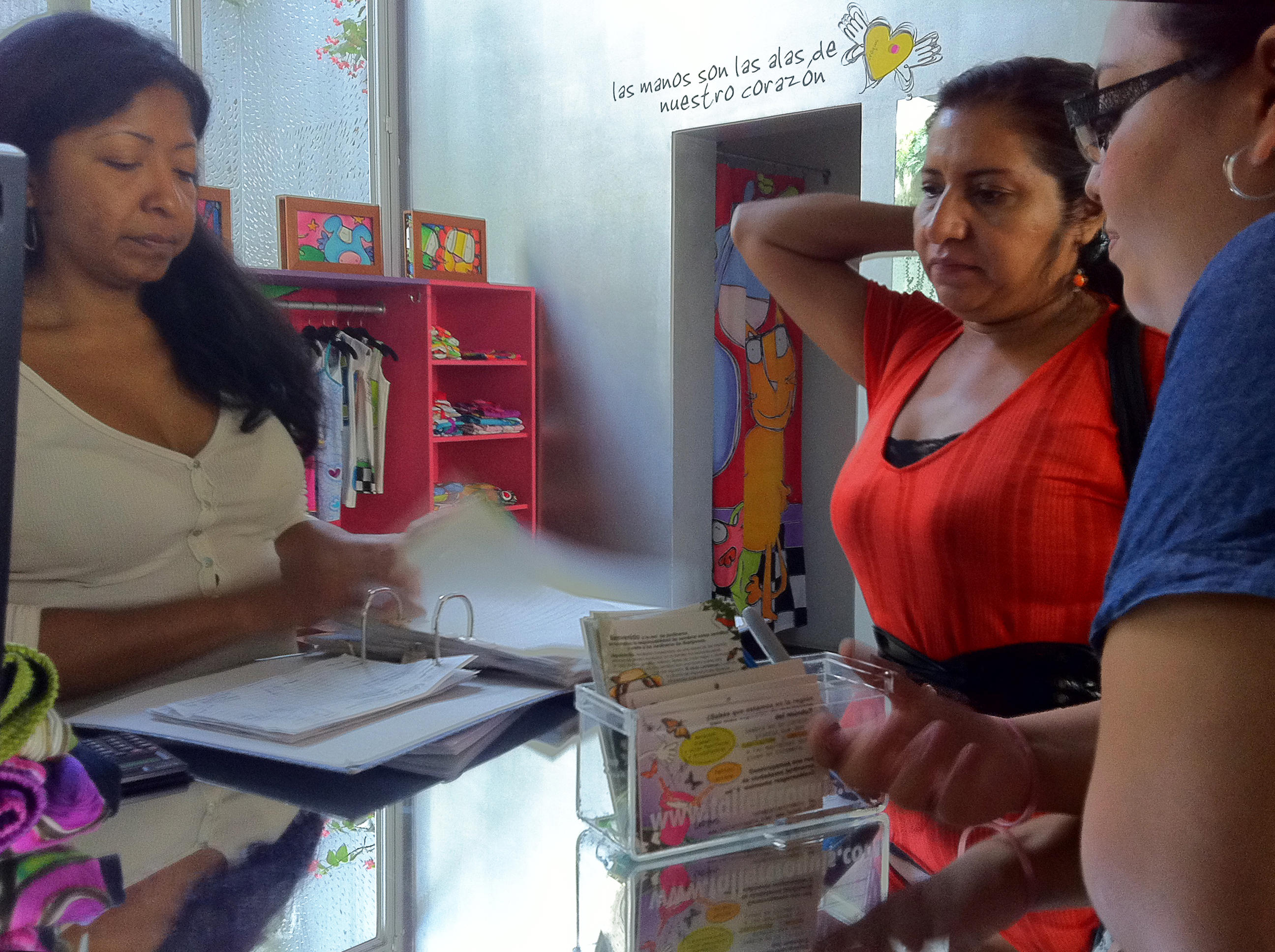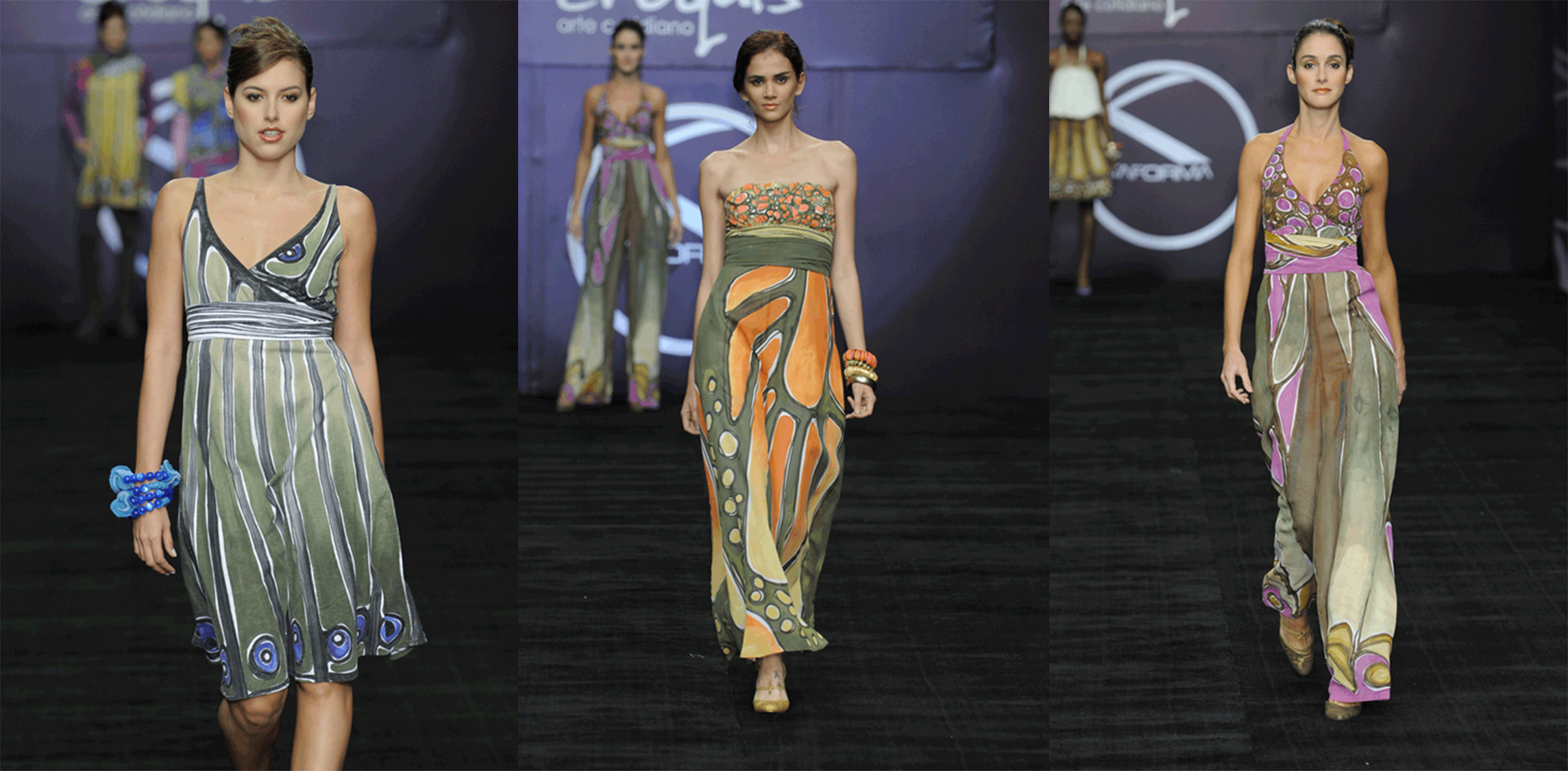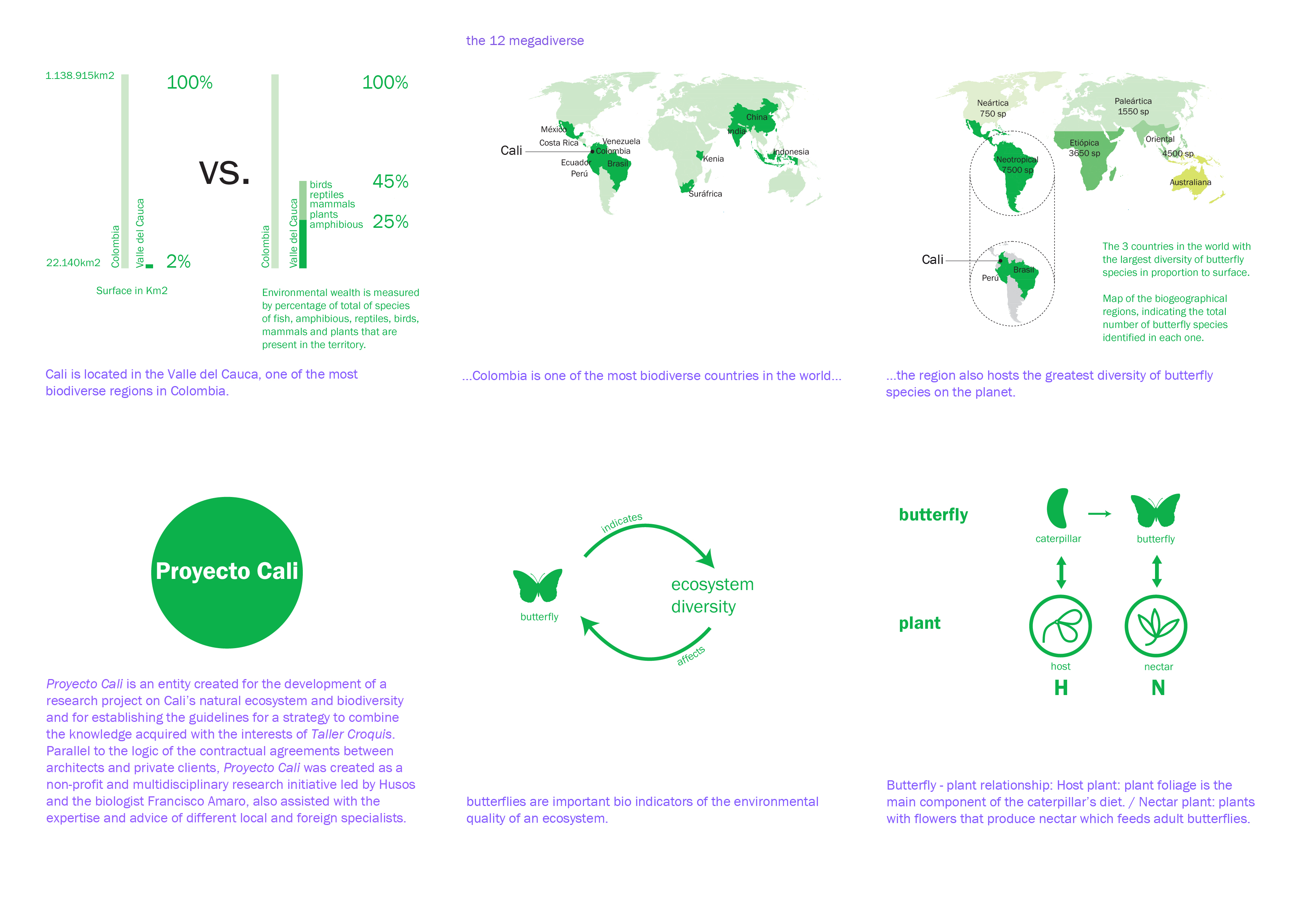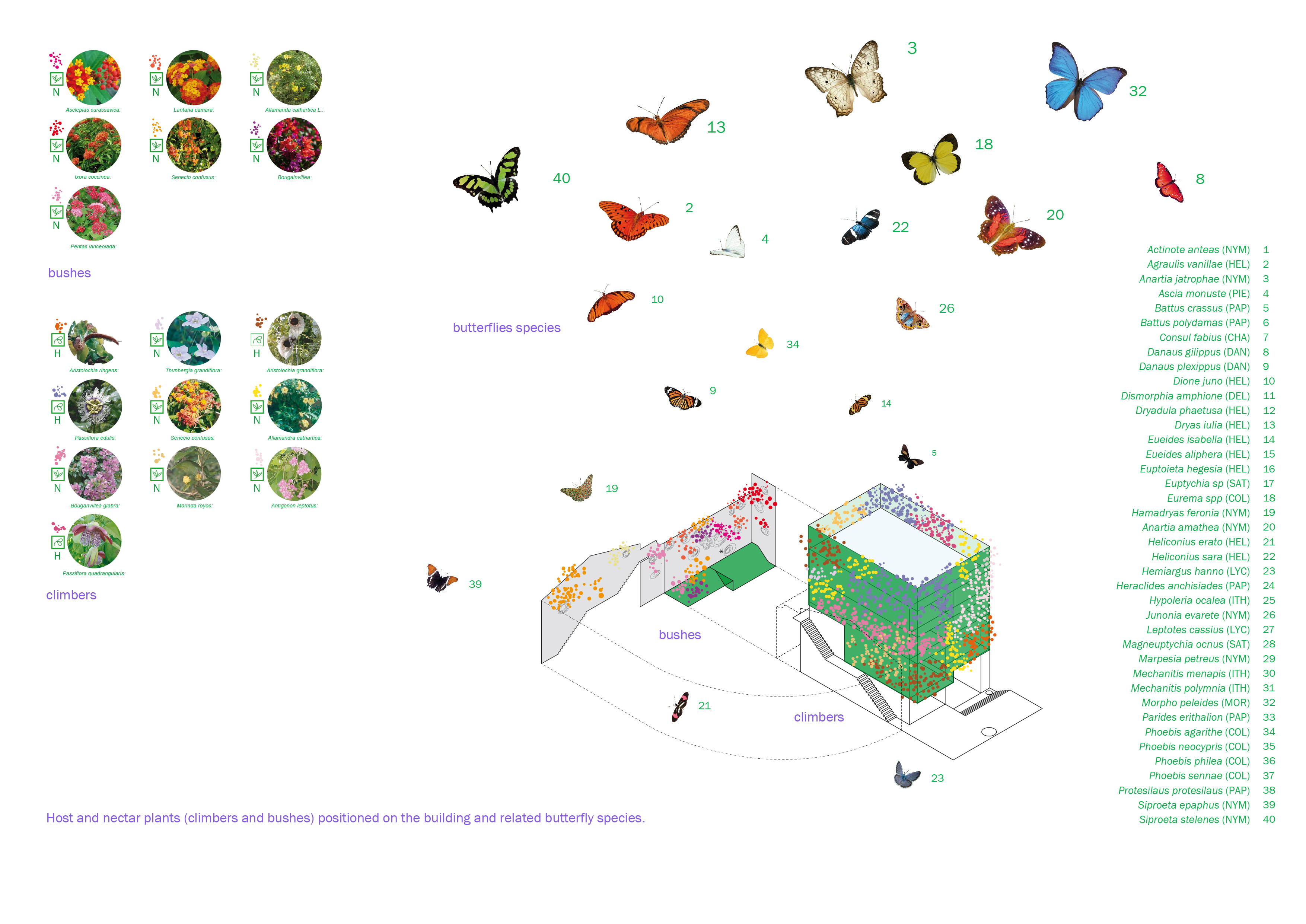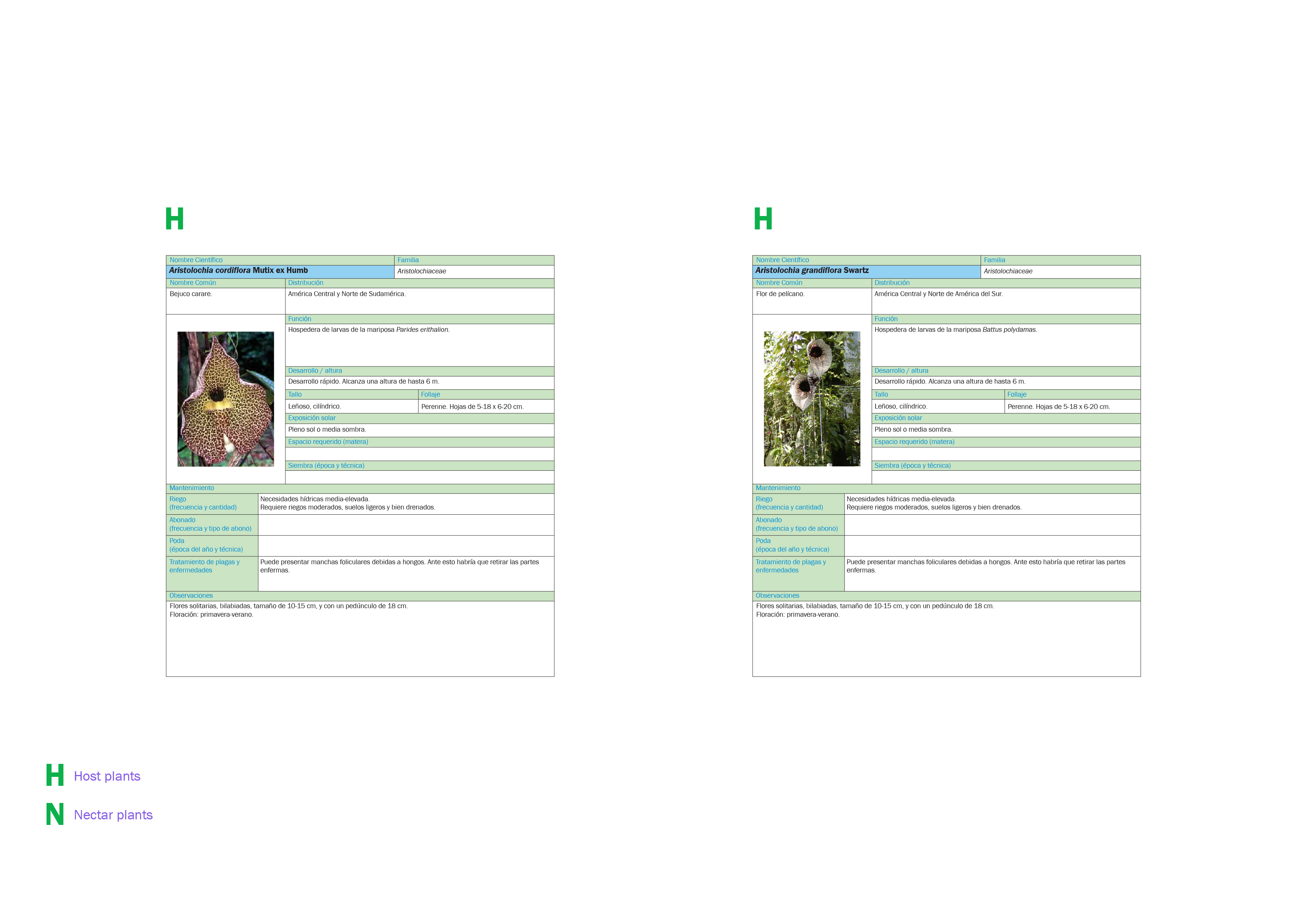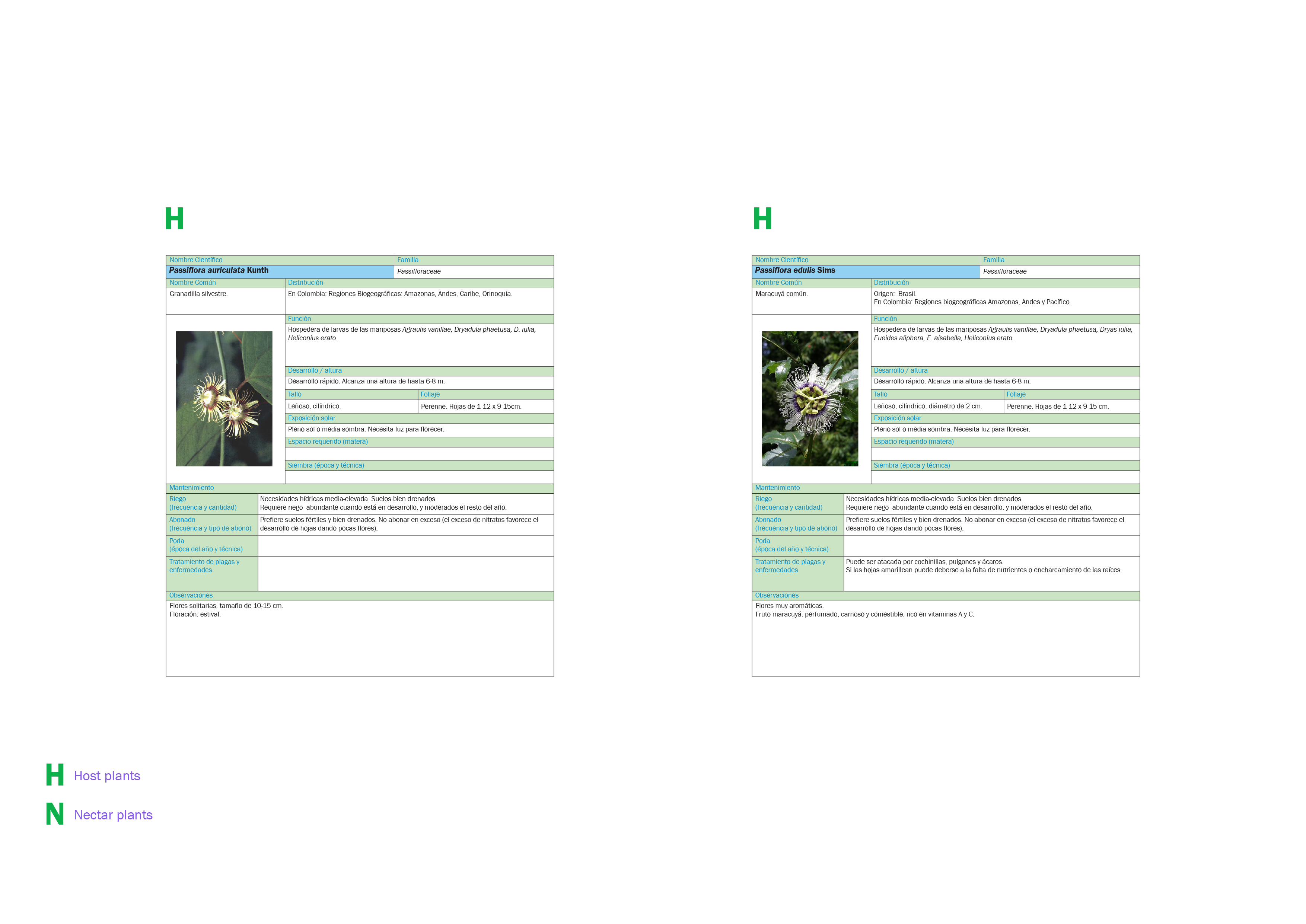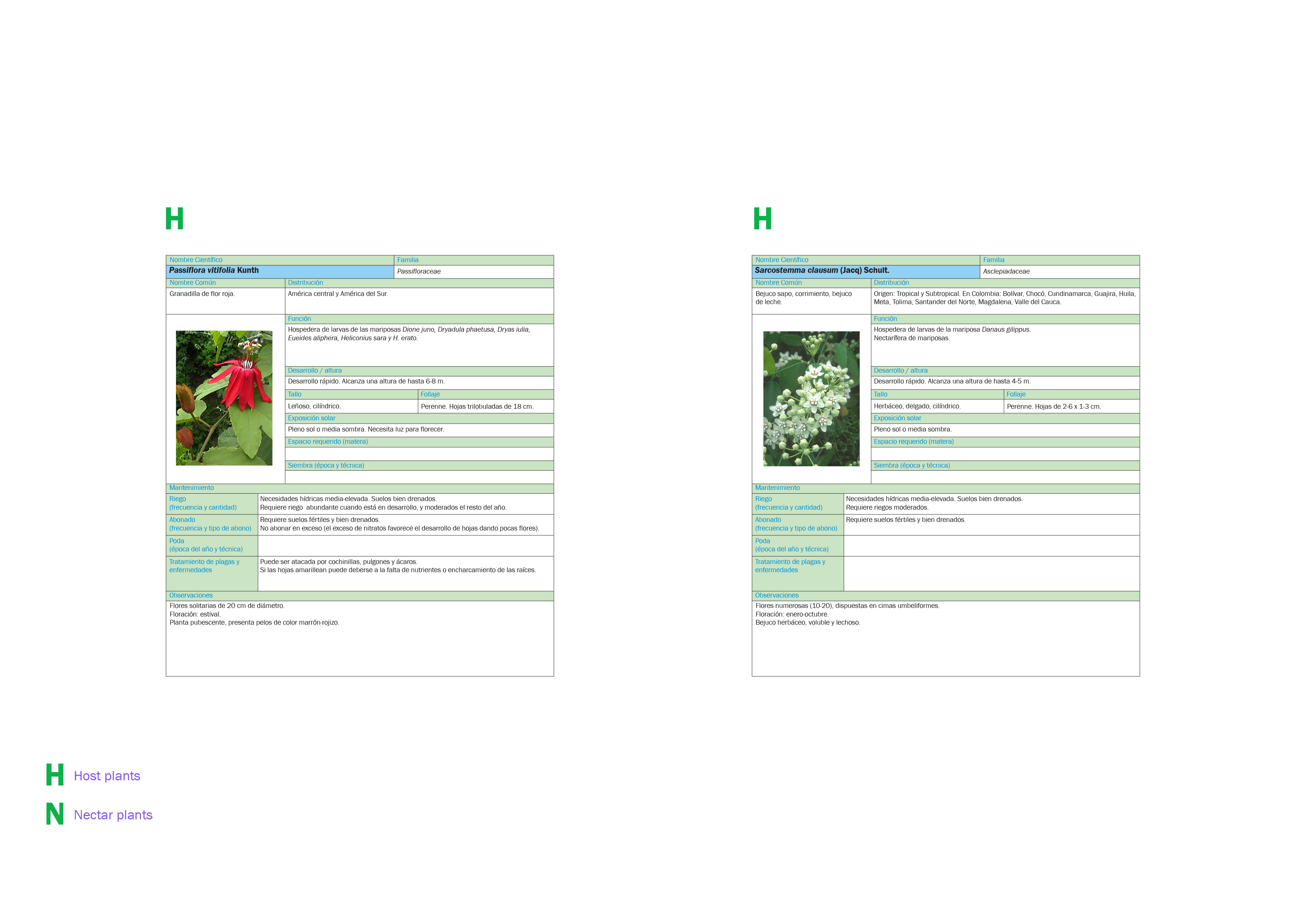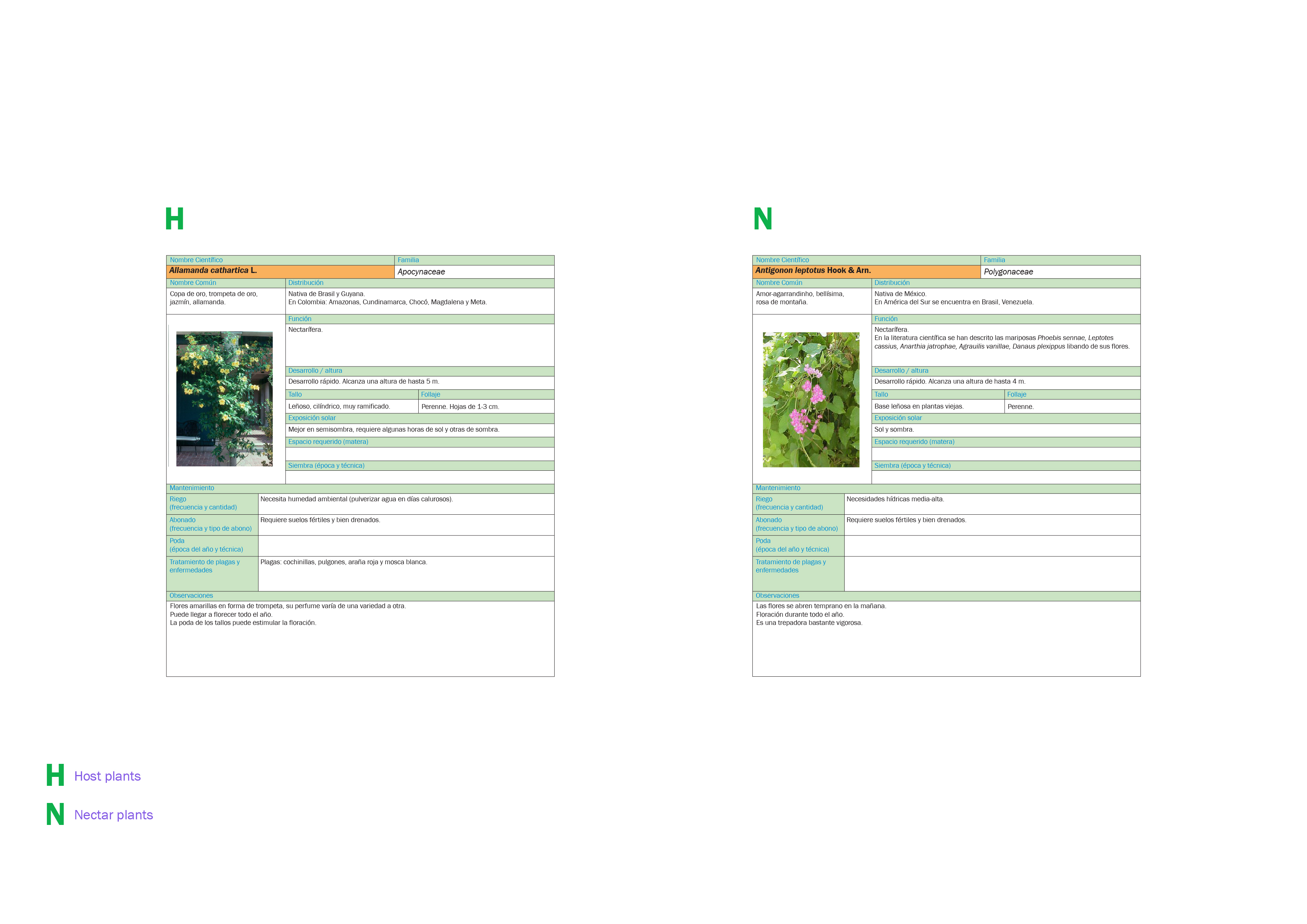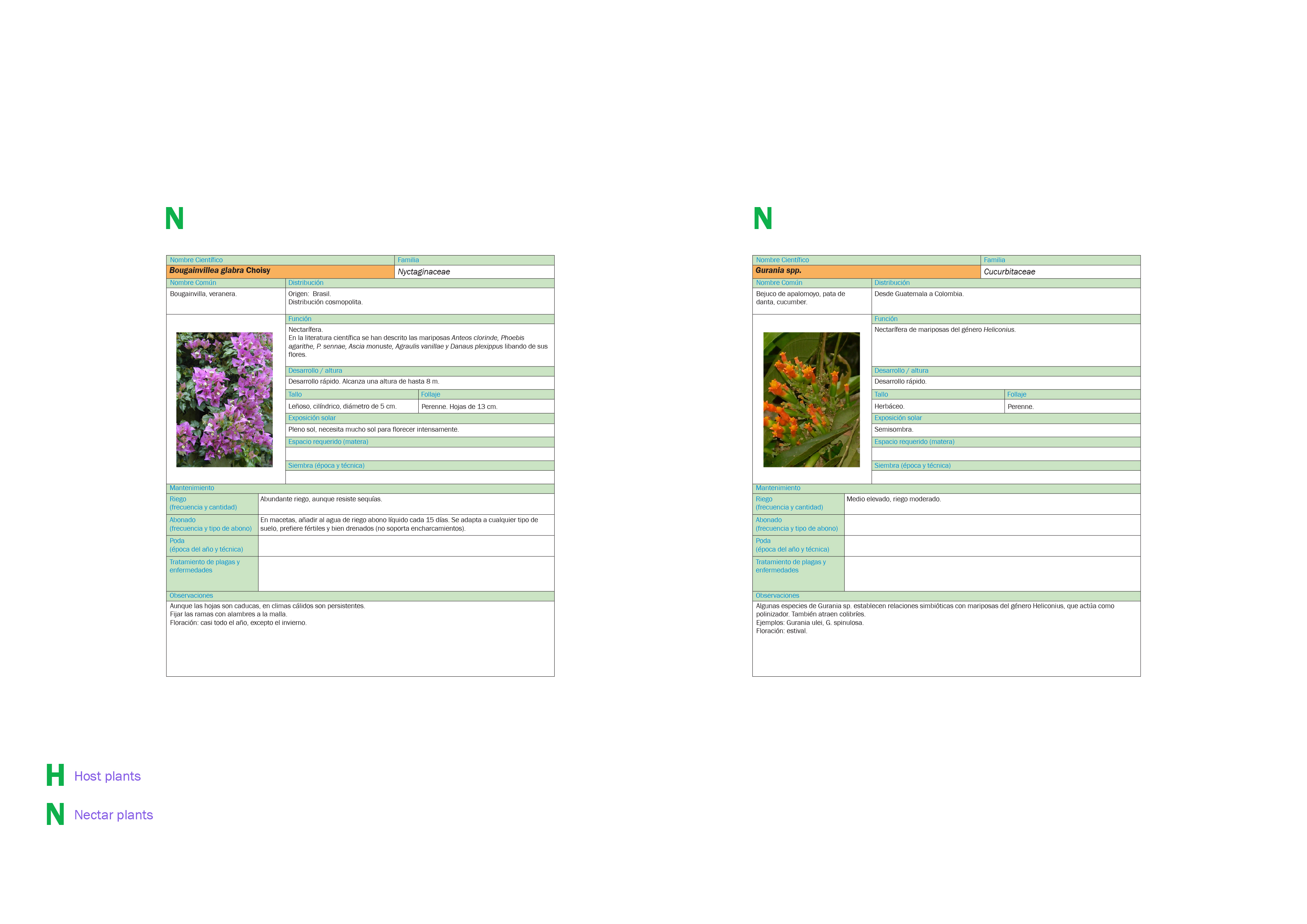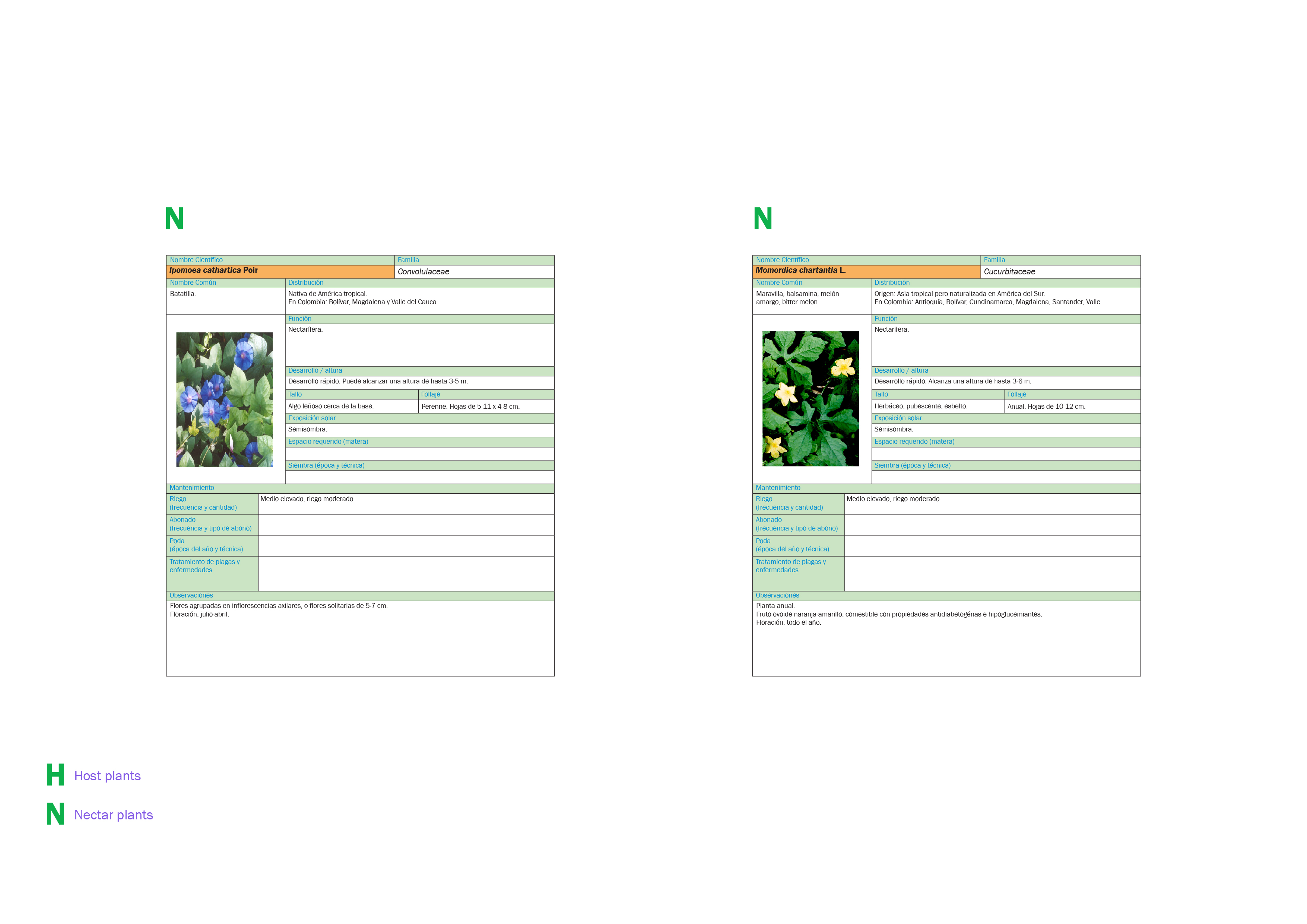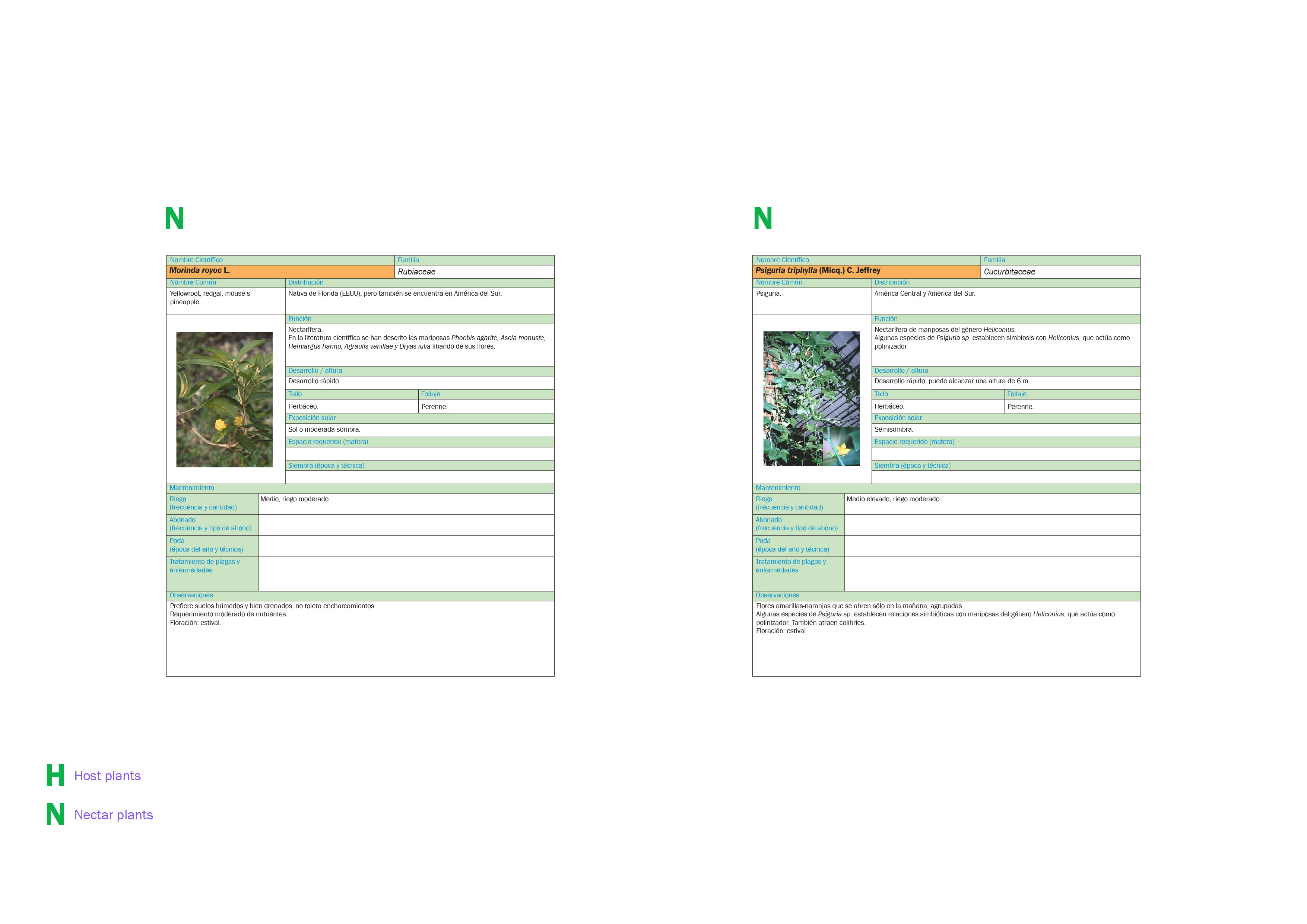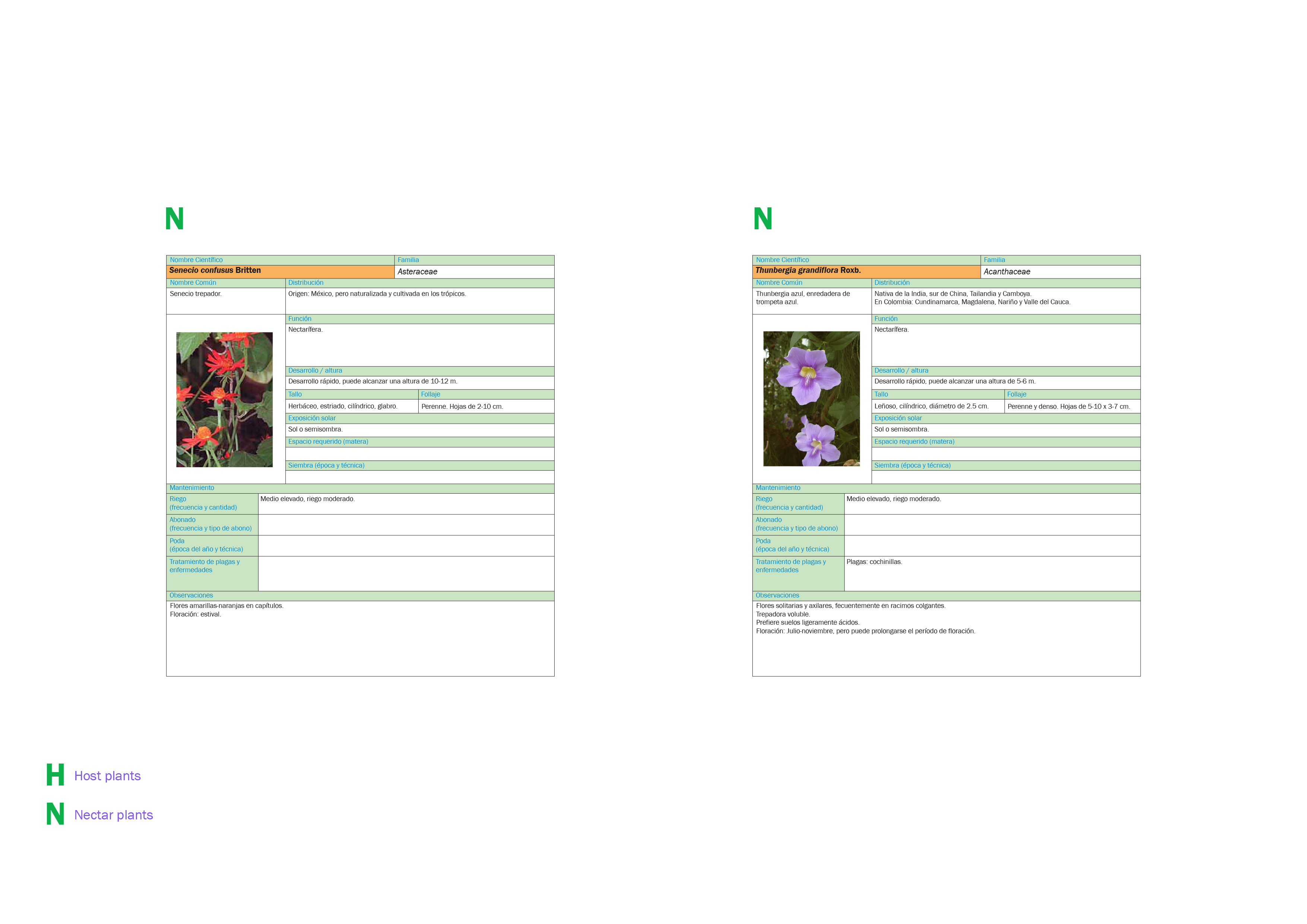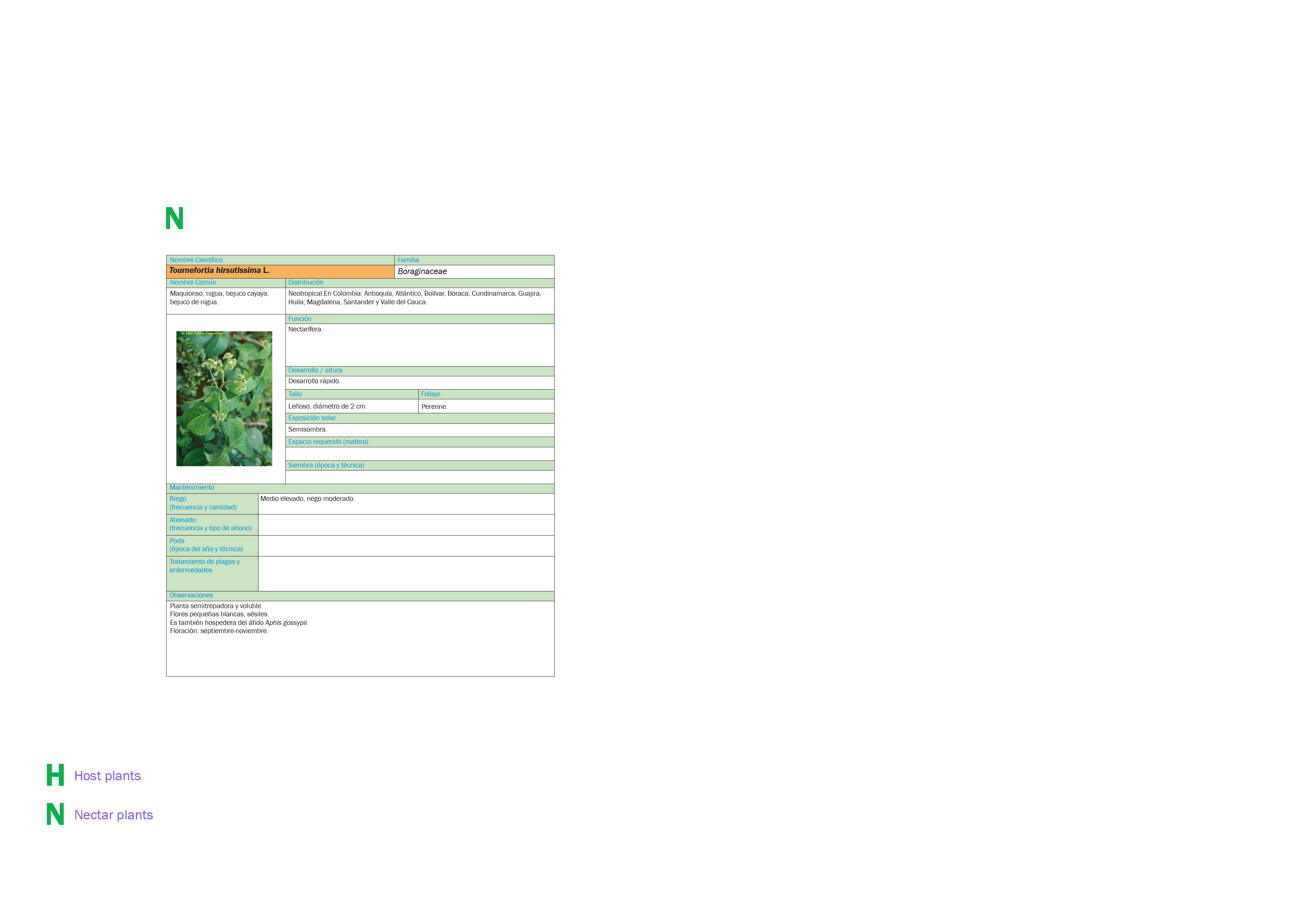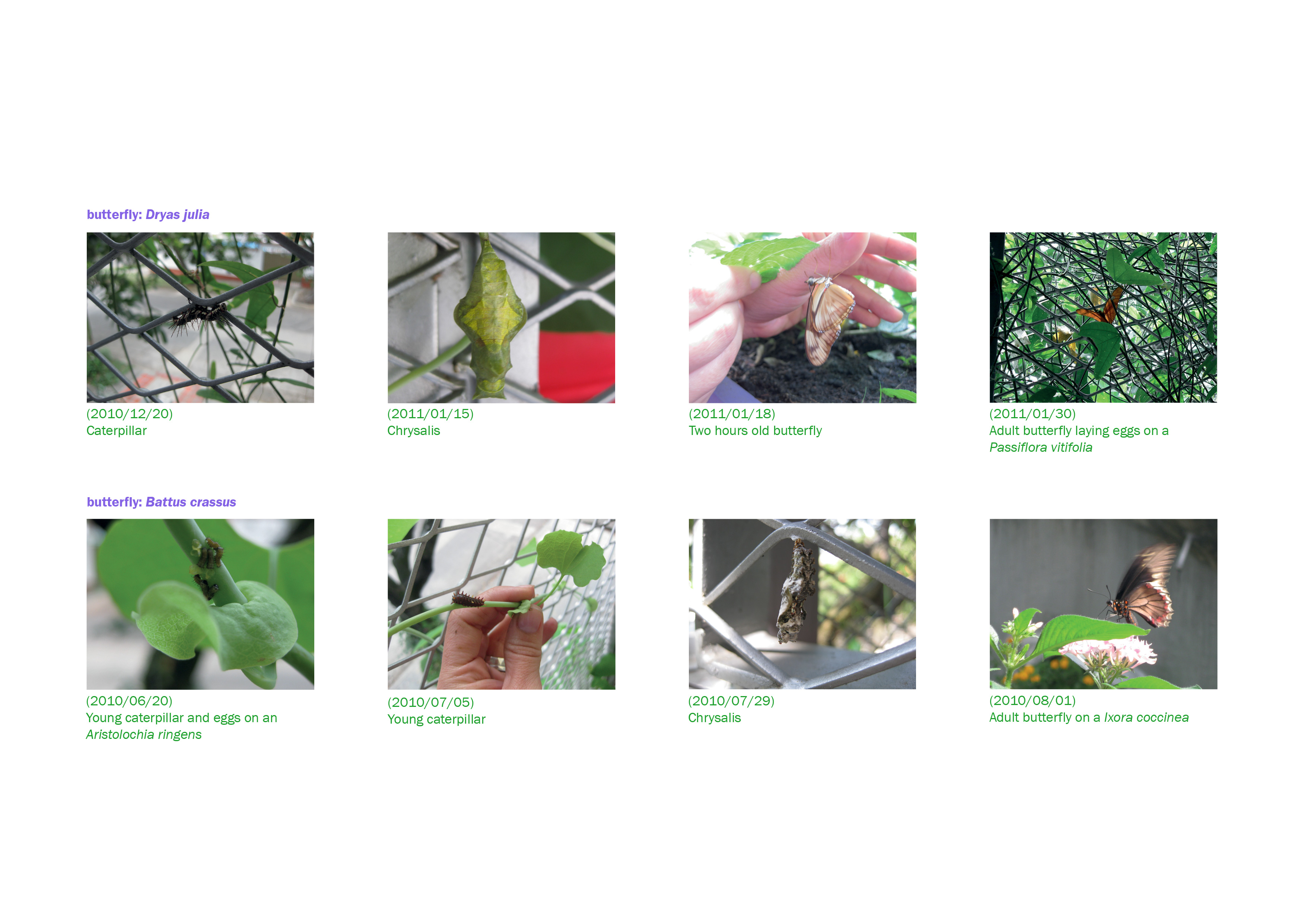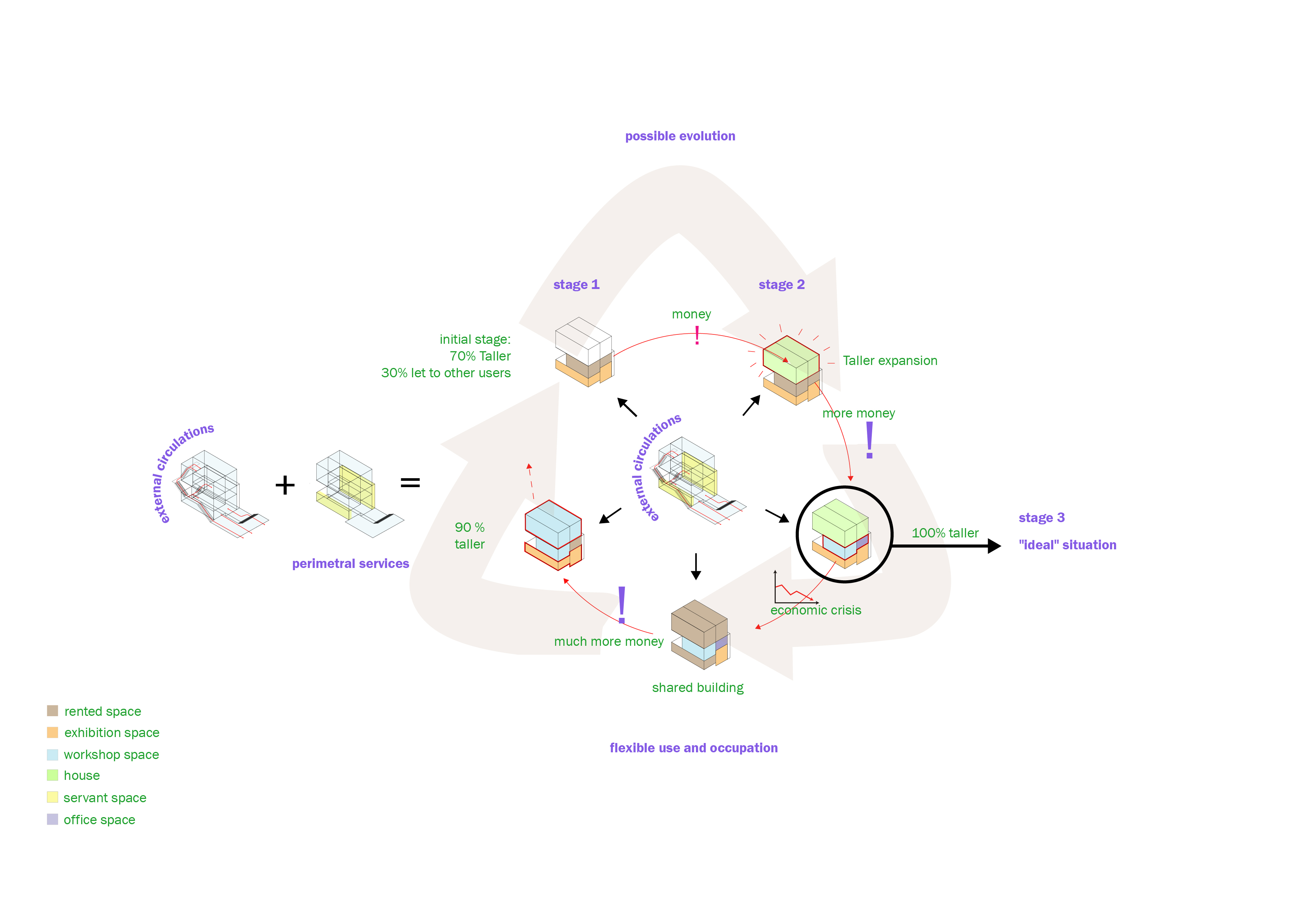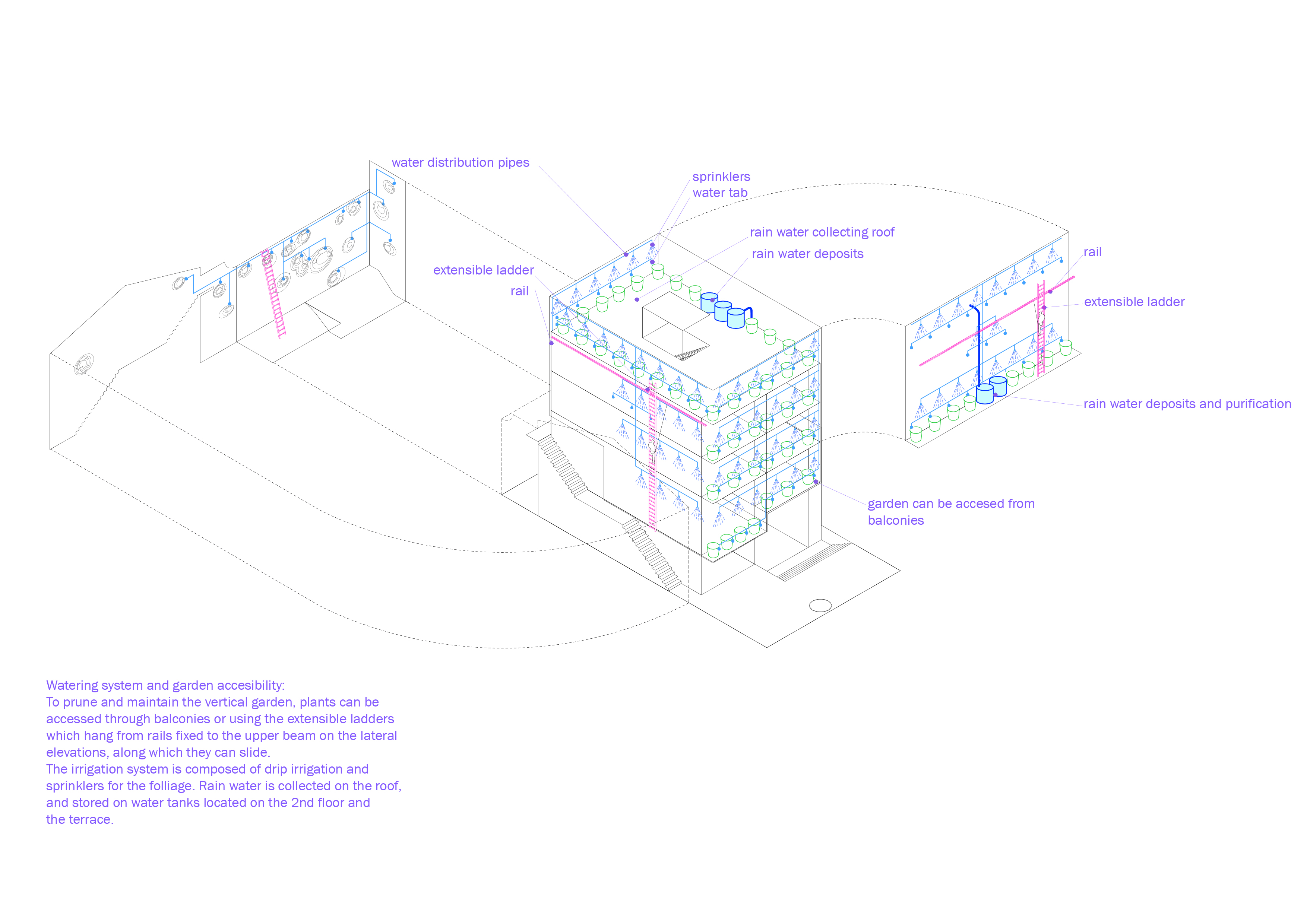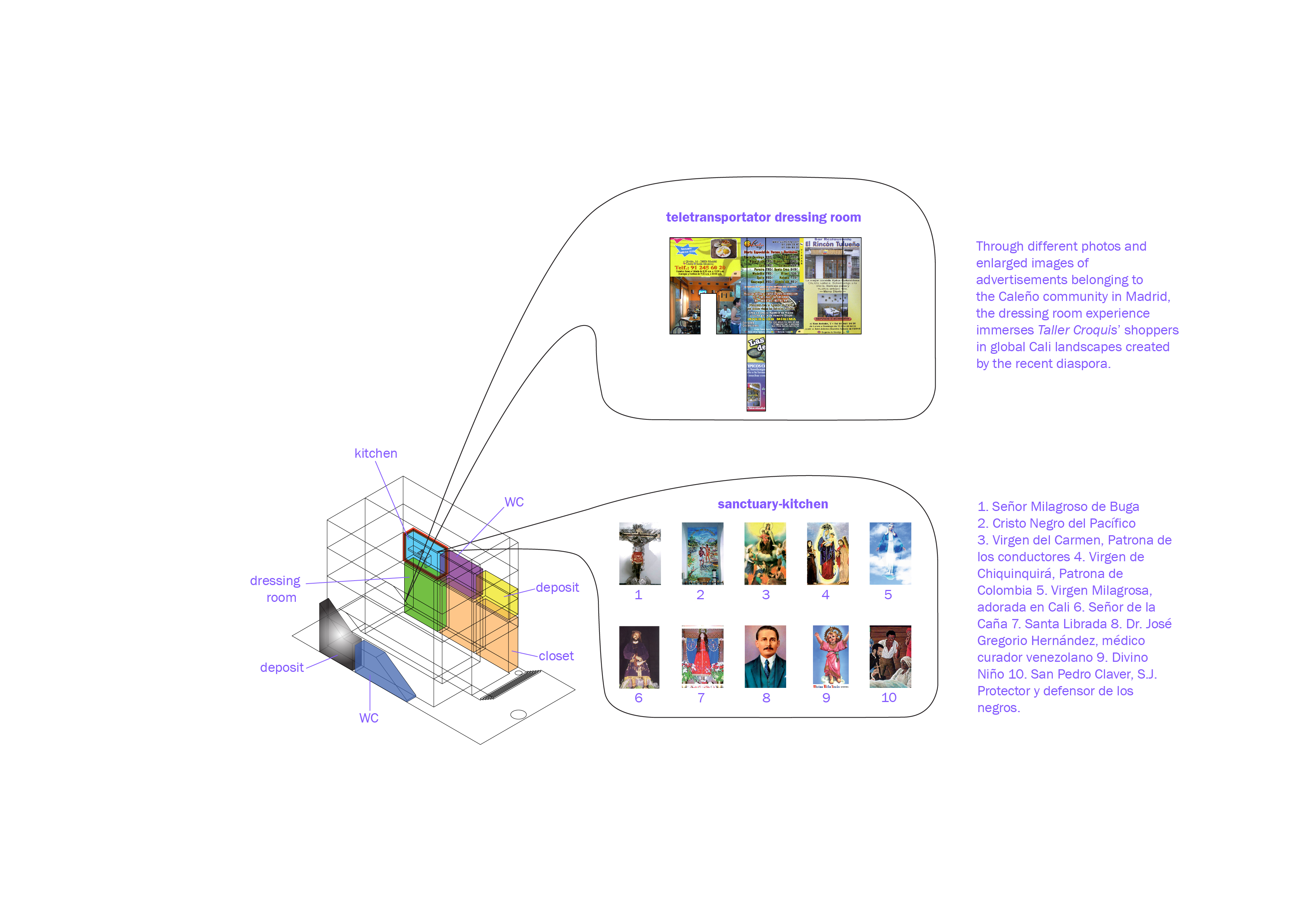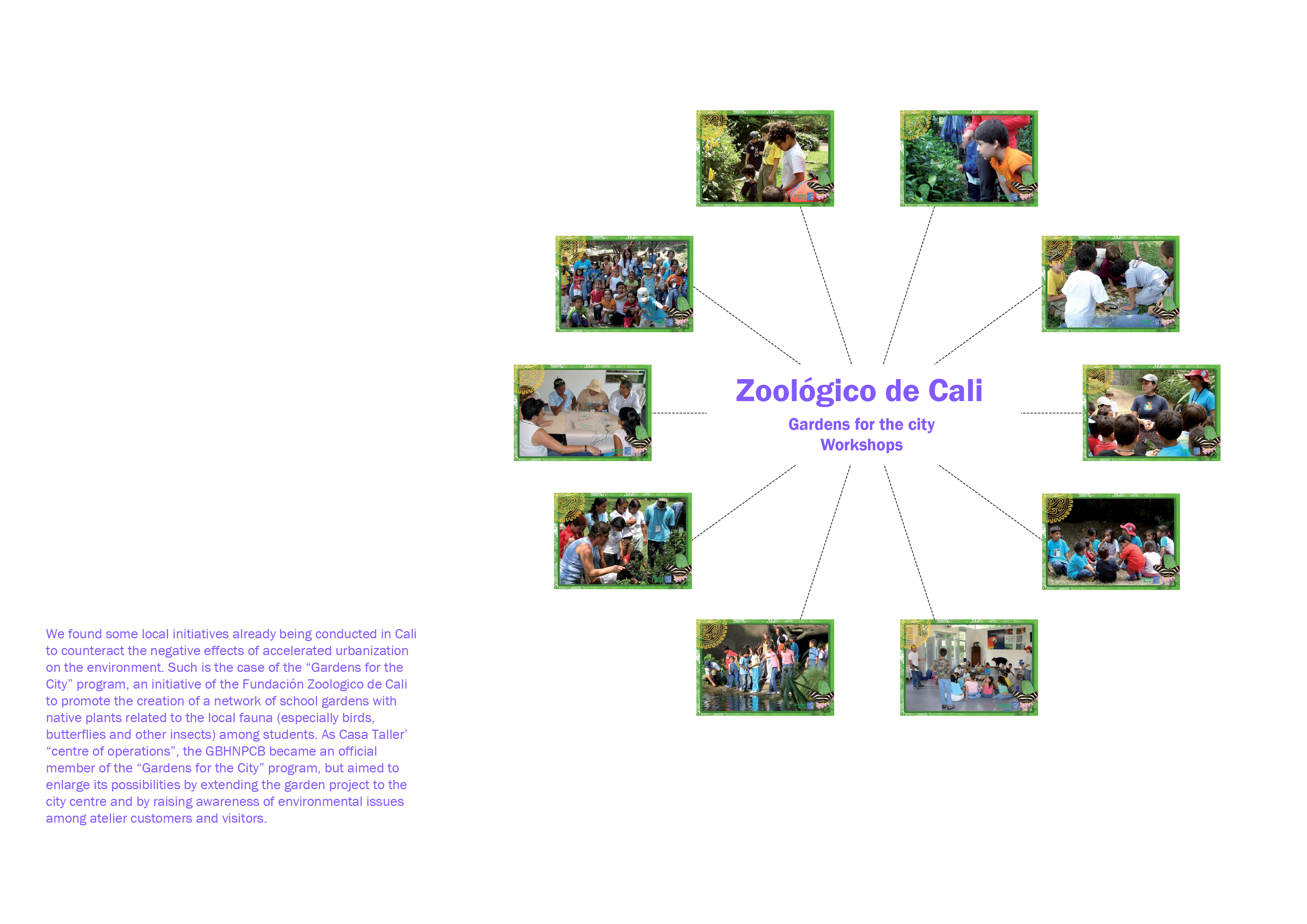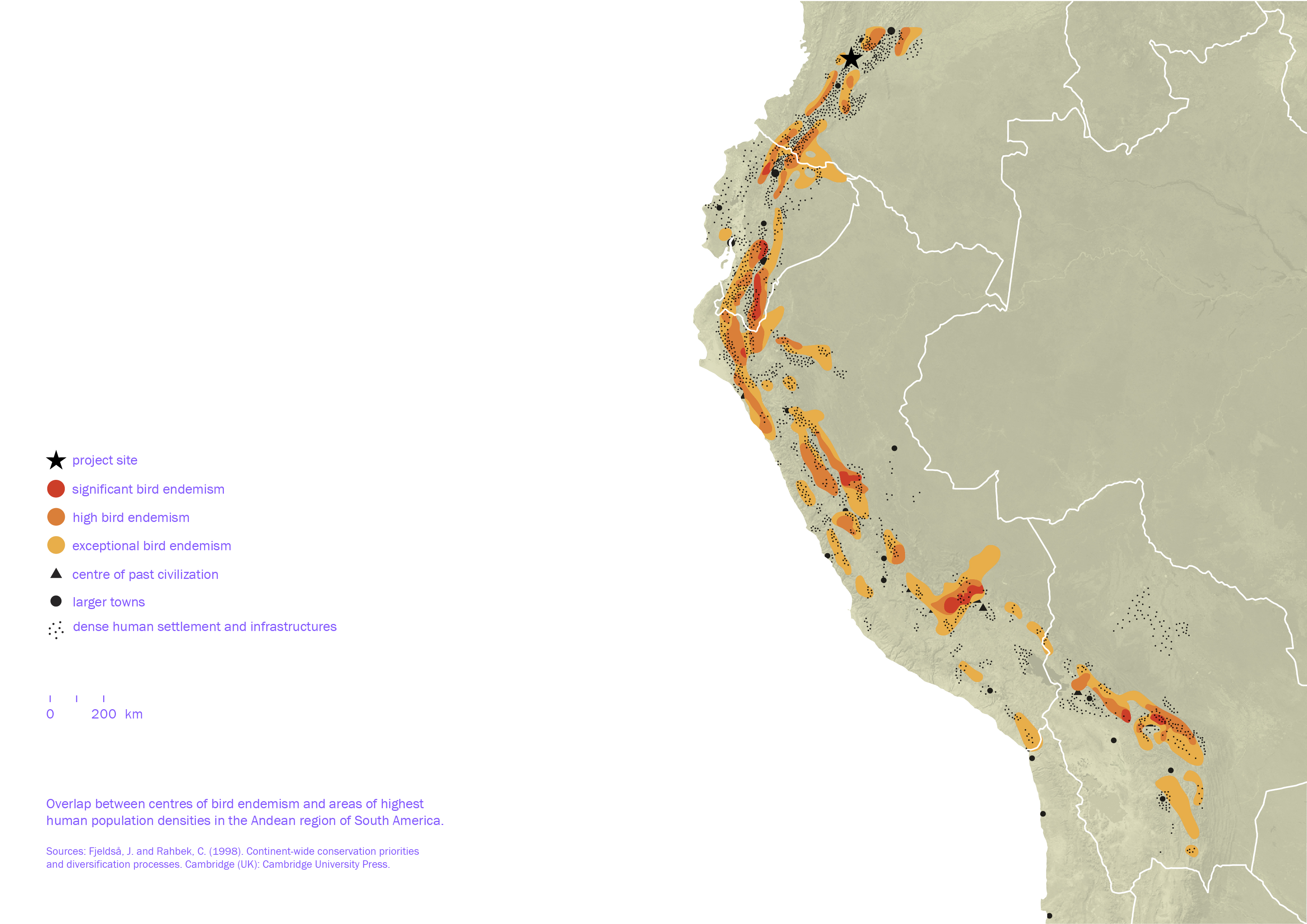>
Host and Nectar Garden Building
and other Micro Communal Gardening Actions
Cali, Colombia
2005
Main Selection Venice Biennale, 2008 / Zumtobel Group Award for
Sustainability, Honorable Mention, 2010 / Animal Architecture Awards, 2012.
This project has
been underway for almost two decades and has involved the design and
construction of a bioclimatic building in the centre of the city of Cali, as
well as the management of various actions to promote environmental care activities
among people visiting it. The building is a Host and Nectar Garden Building
(EJHNMC, in its Spanish acronym) that includes households and work areas. It
was originally conceived as a building for a small workshop specialising in
clothing and decoration items in Cali. The green façade provides a comfortable
microclimate within the building, reduces energy consumption and is a domestic edible
garden for insects and birds in the area, which rely on a network of biological
corridors to move around.
This is achieved
by means of two different actions: The first one involves using bushes and
climbing plants from the local ecosystem (mainly nectar and host plants for
butterflies) which are also part of the habitat for birds and other local
insect species. The building uses the presence of butterflies as a biometer to
gauge the quality of the environment and lend visibility to the unique value of
the biodiverse ecosystem where it is built. Butterflies are generally one of
the most effective indicators of an ecosystem’s quality and biodiversity, and
they are especially important in this area, that is home to the greatest
diversity of butterflies in the world.
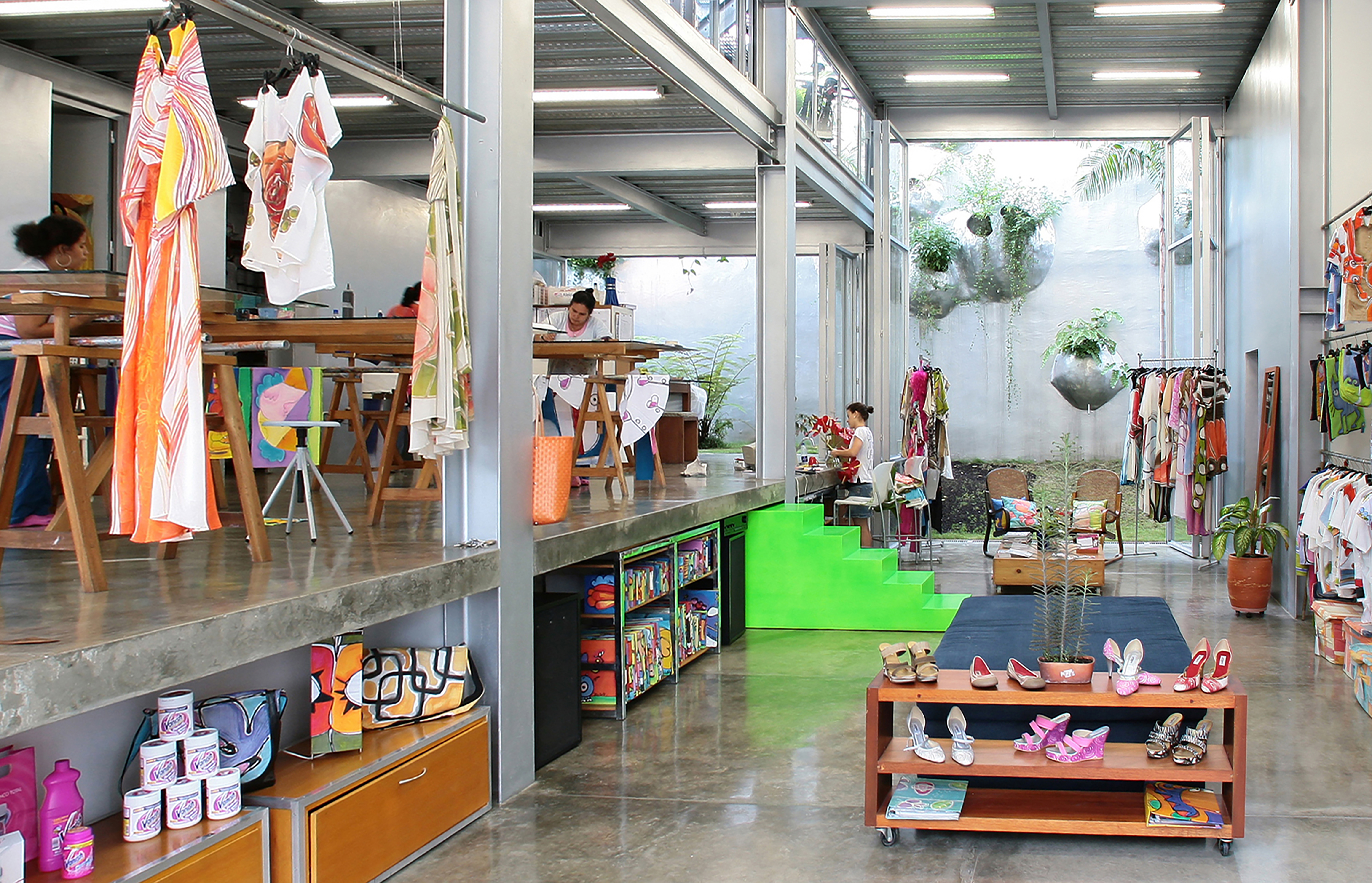
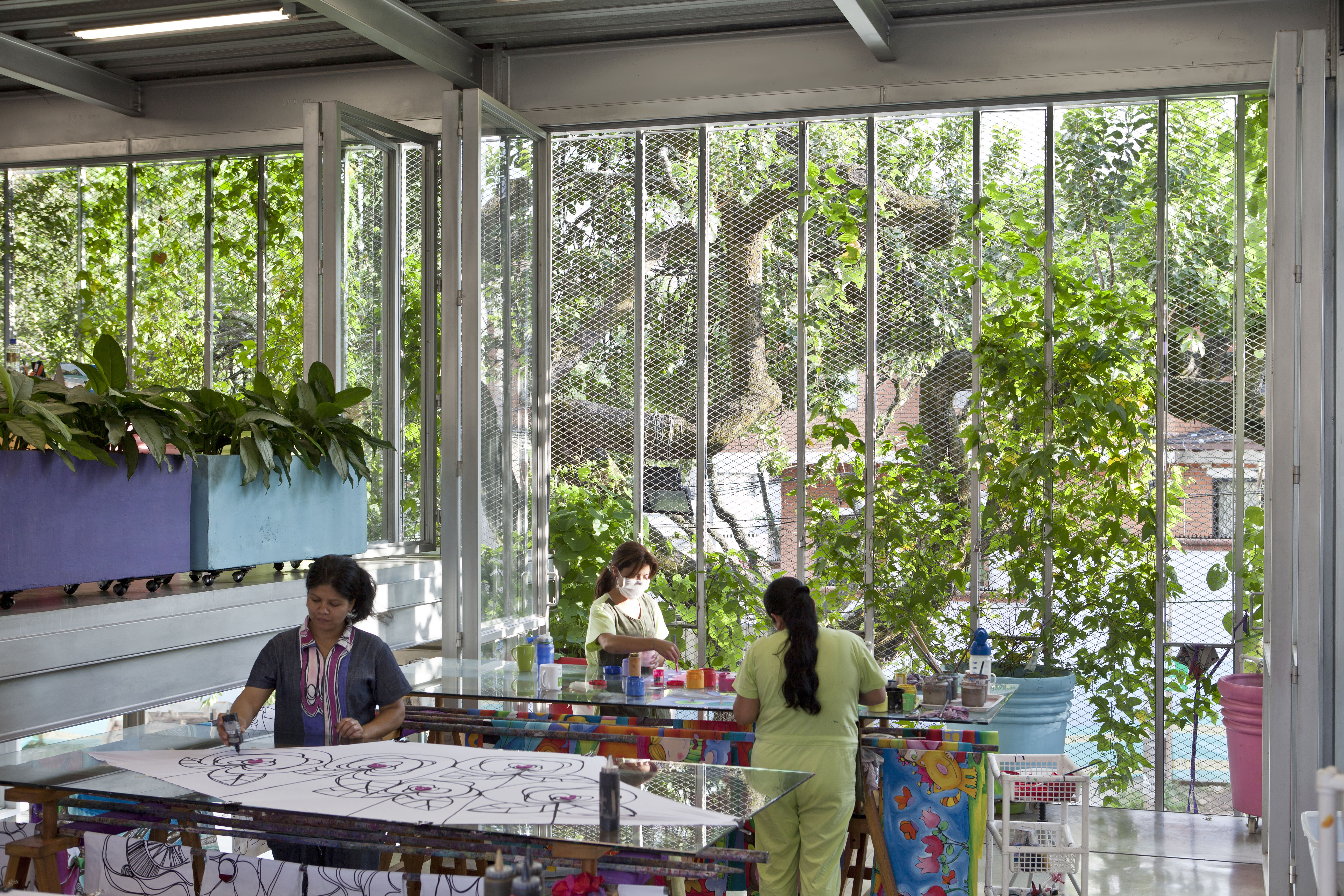
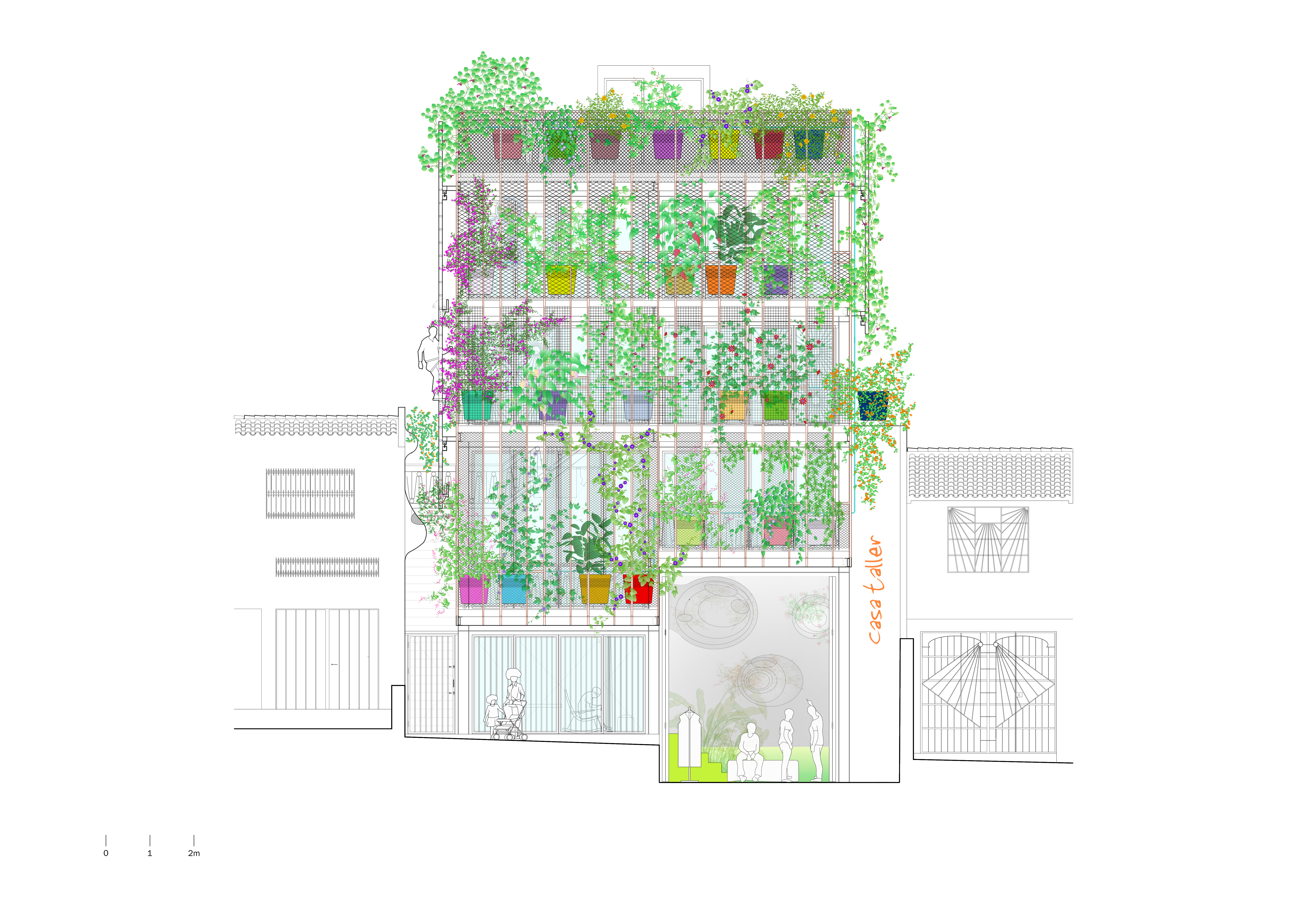
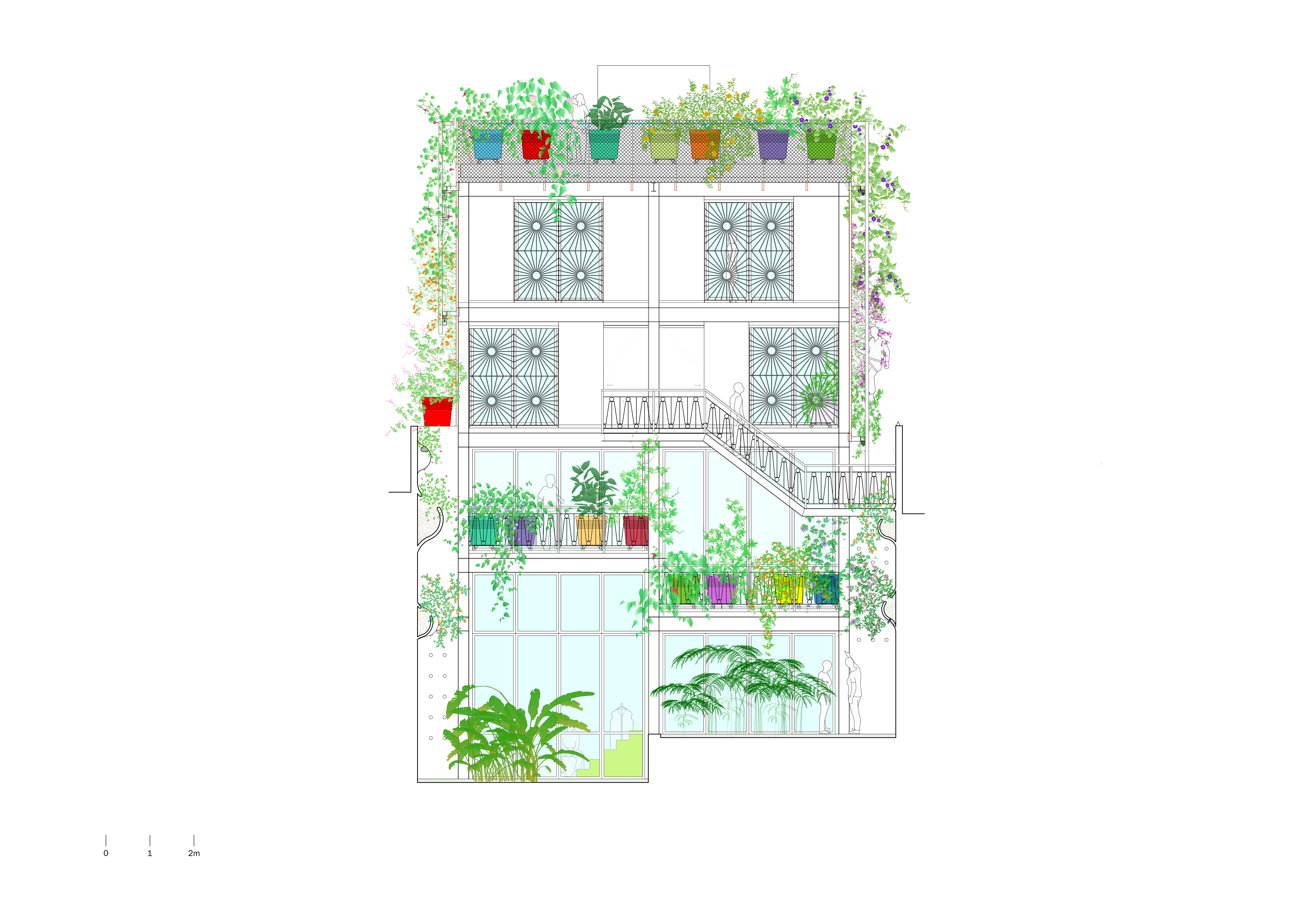
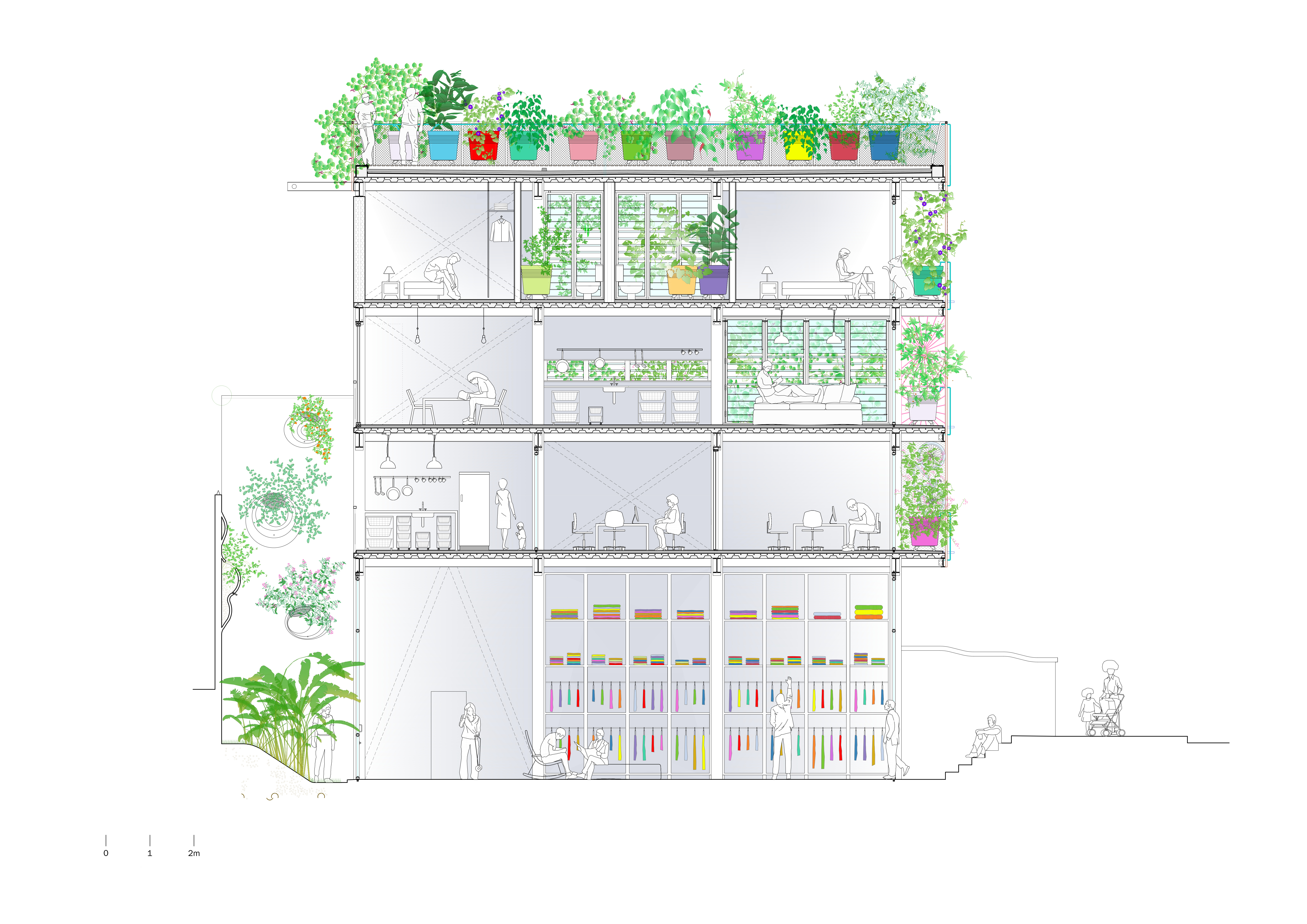
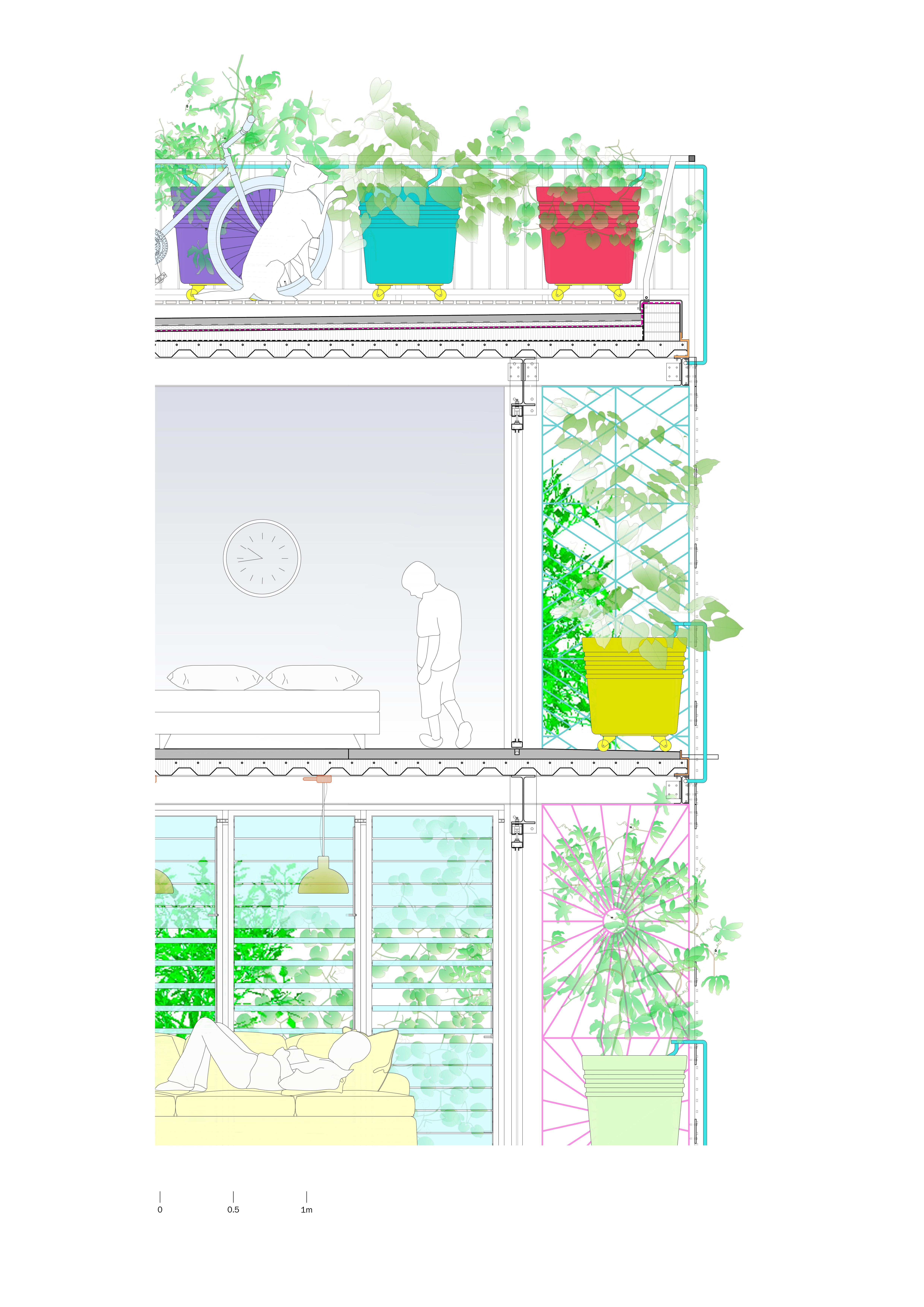

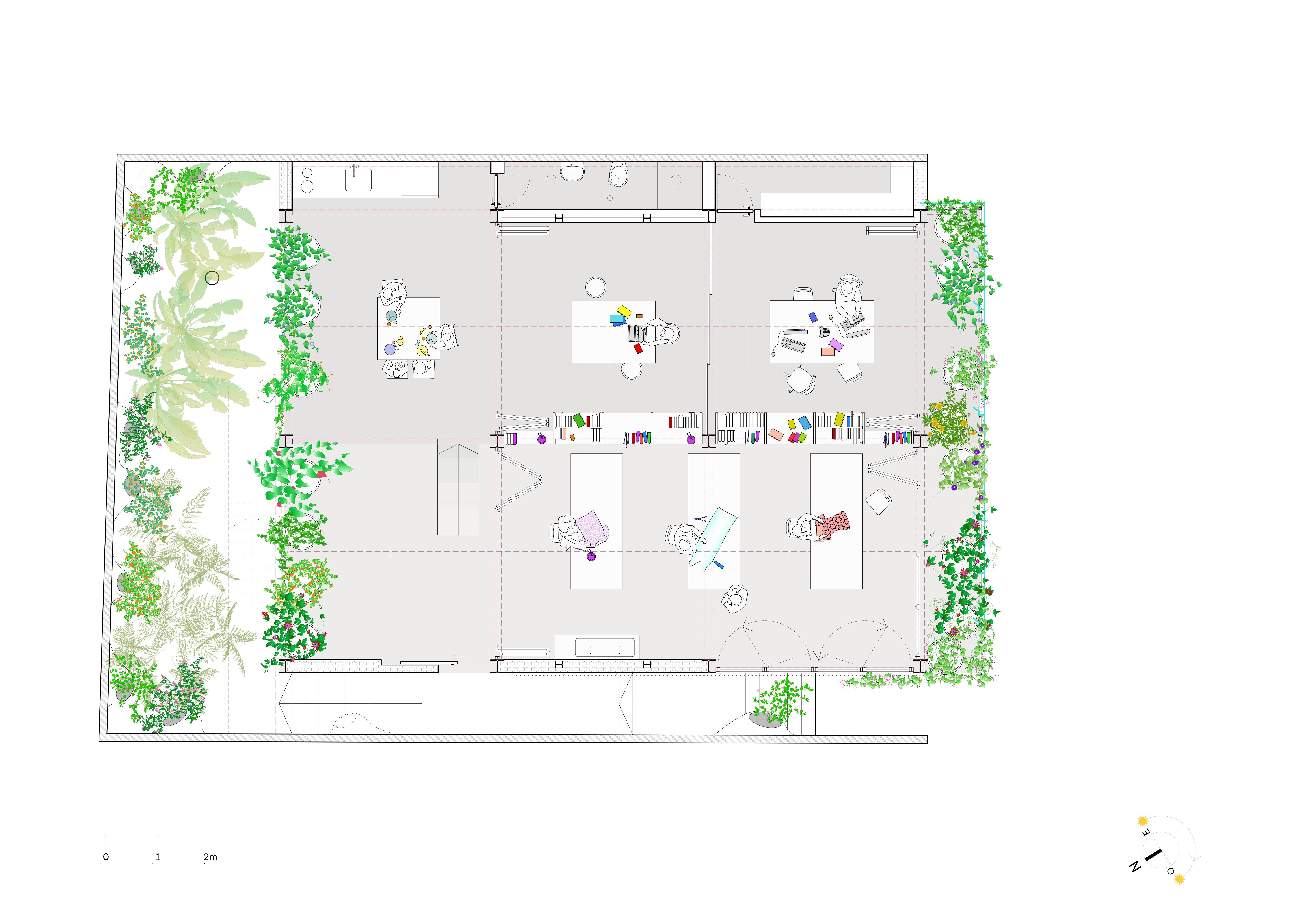
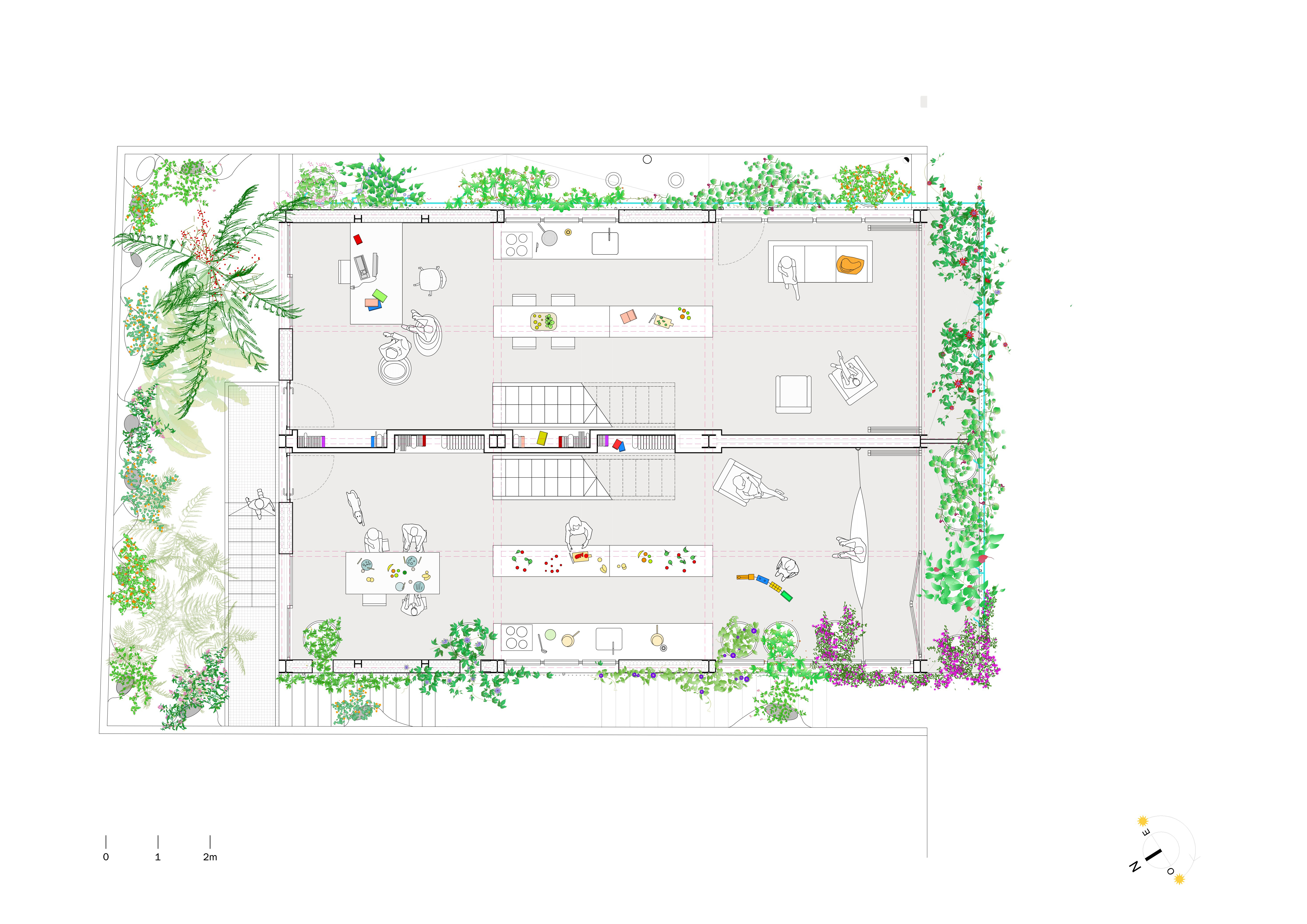
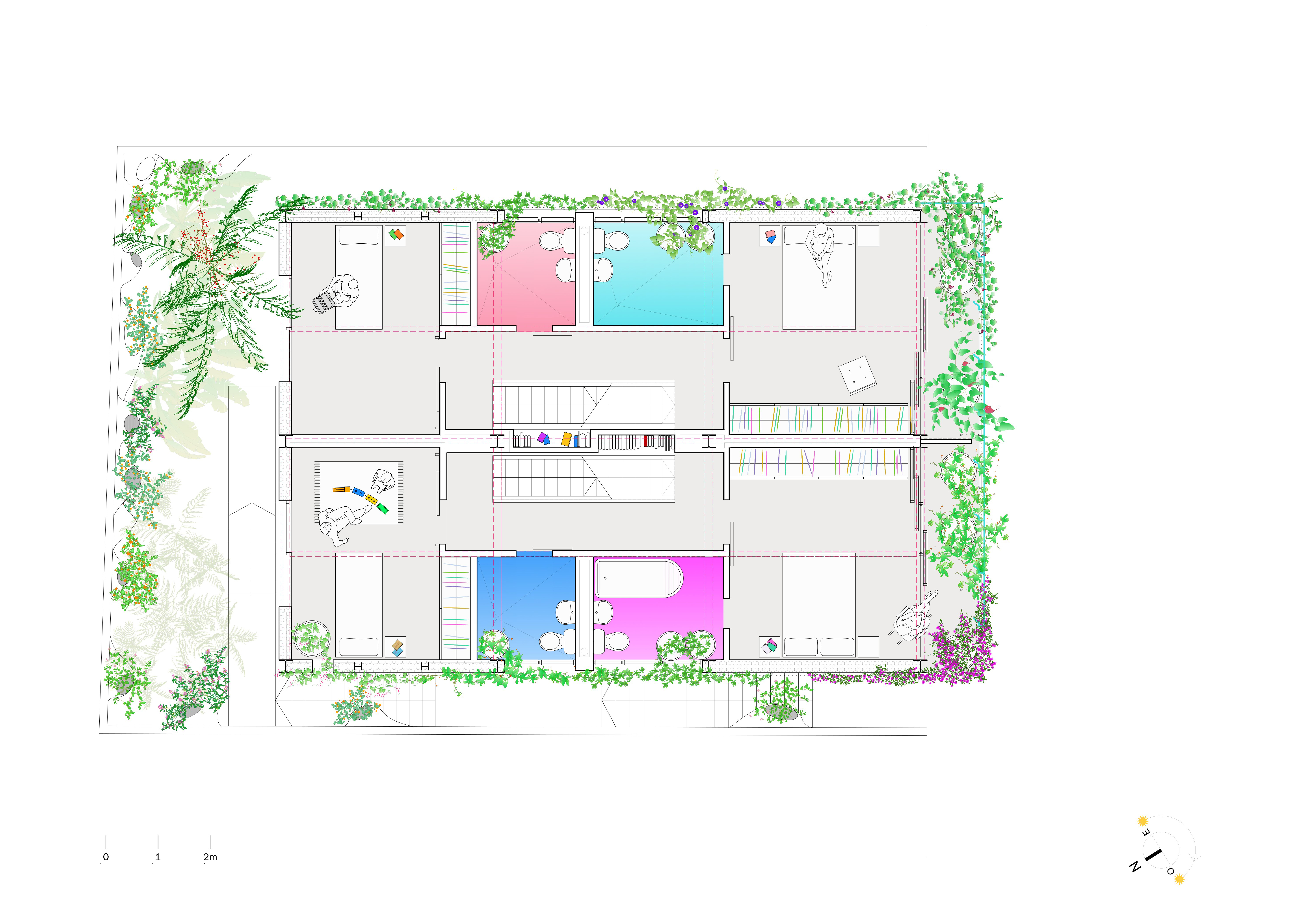
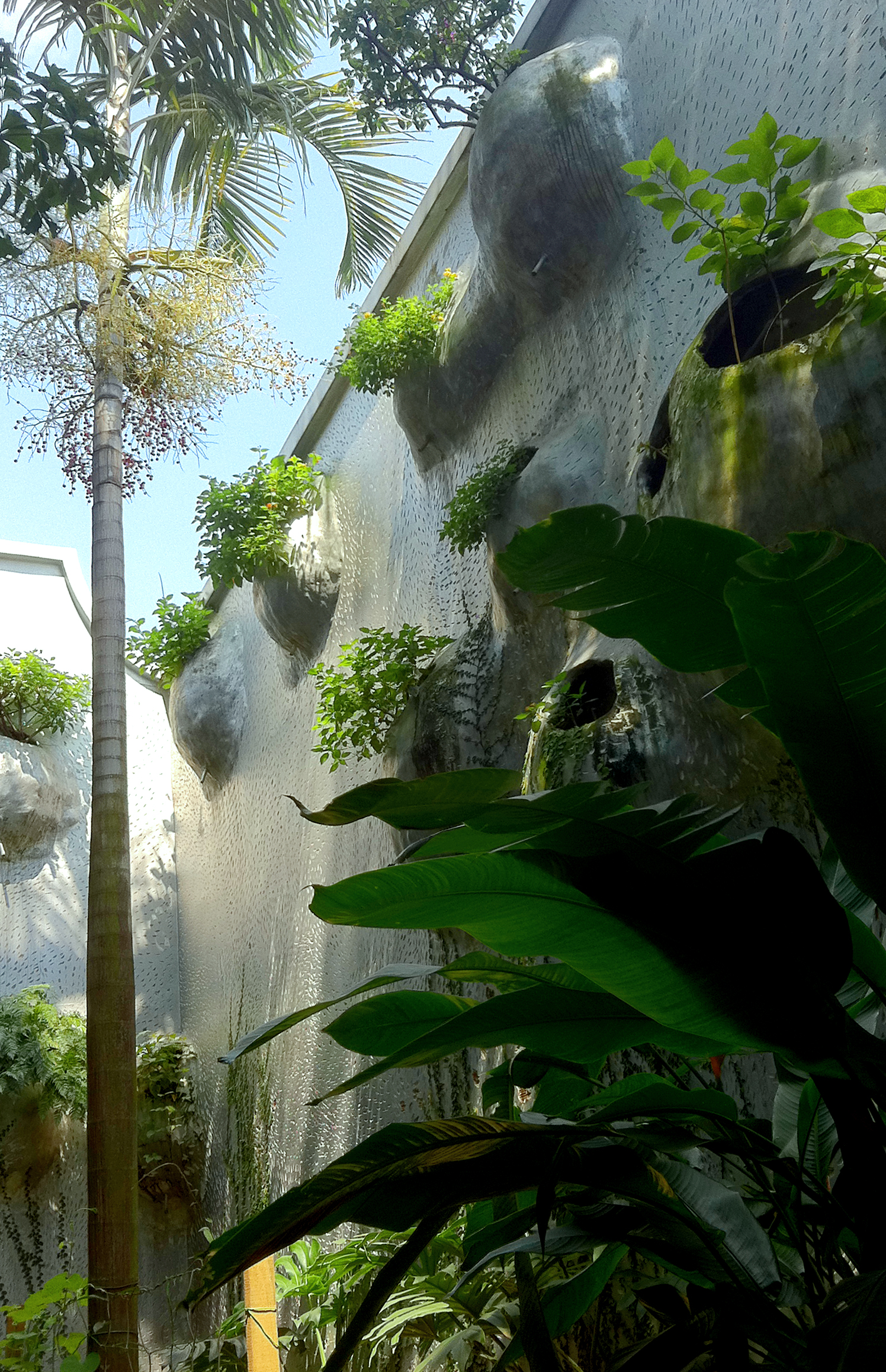
The second
action ran in parallel to the design of the building-garden and was developed
with the assistance of biologists, of the Cali zoo and the textile atelier
during the years that it was established in the building: it involved
encouraging and supporting the dissemination of information about the
importance of the natural singularity of Cali within the world and, in short,
to contribute to the strengthening of affective bonds between the Caleños visiting
the shop and their natural environment. The dissemination activities included
handing seeds and brochures to the visitors of the building and organising
workshops for neighbourhood children. The purpose of these actions was to contribute
to the preservation of the biological corridors within the city, encouraging
those receiving the seeds to plant them on their balconies, front gardens and
patios.
The design of
the building-garden and its micro-community actions have allowed the garden to
work as a set of different affective media devices that have fostered mutually
beneficial relationships between the house-workshop and its environment, acknowledged
as entities operating on different scales and though different mediations. The
social and natural processes occurring therein over time have turned it into an
architectural micro laboratory for approaching some of the dynamics and
temporalities of the city’s biological component.
